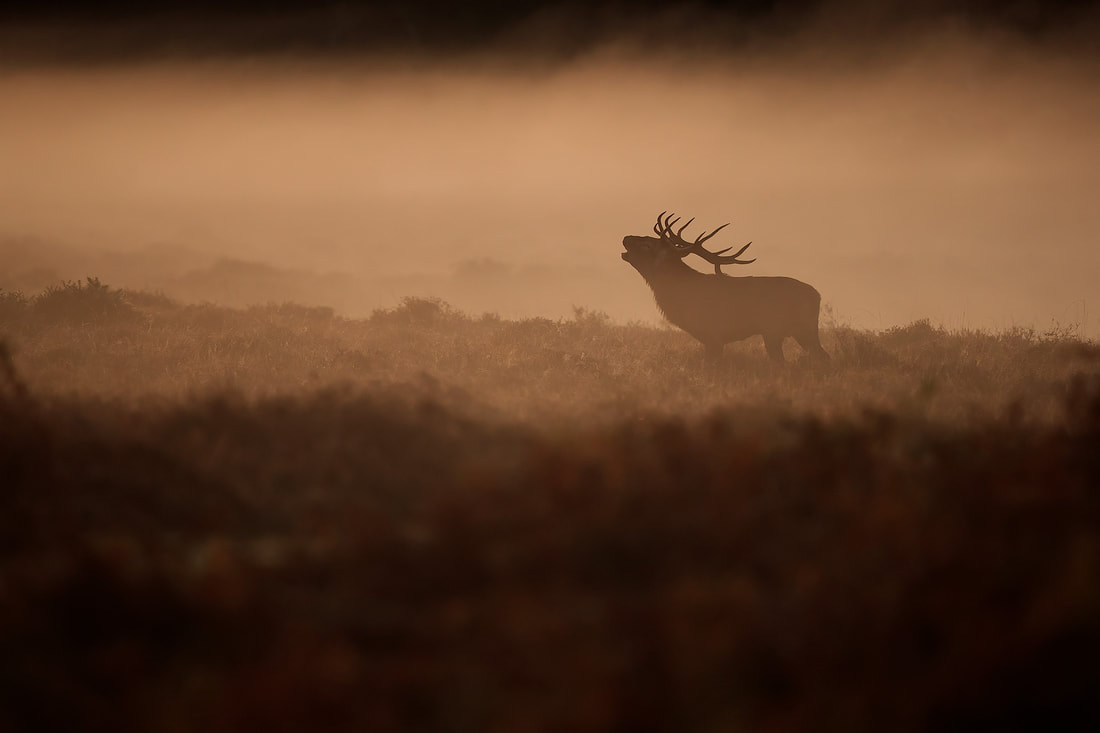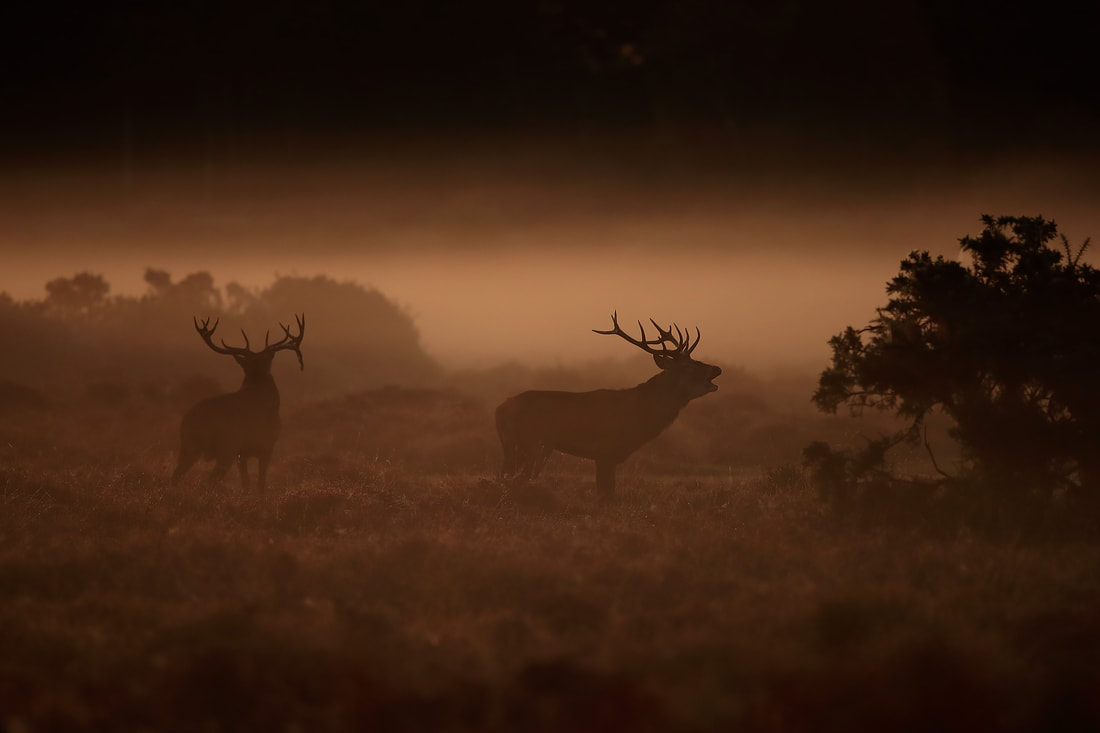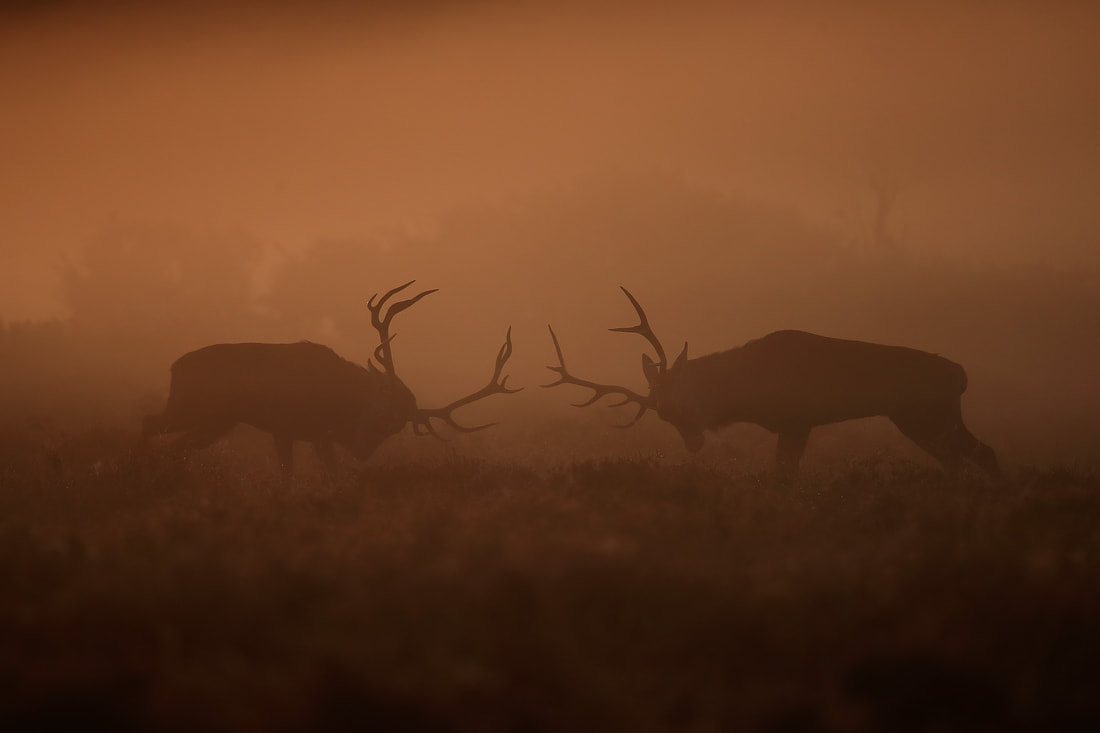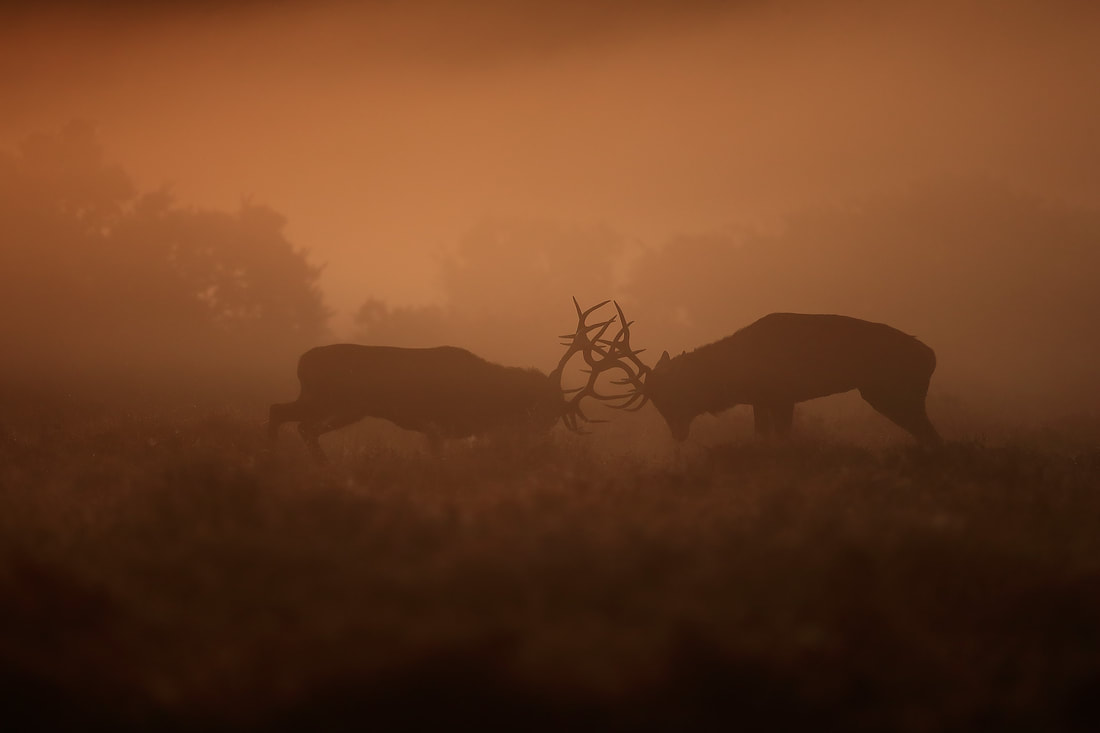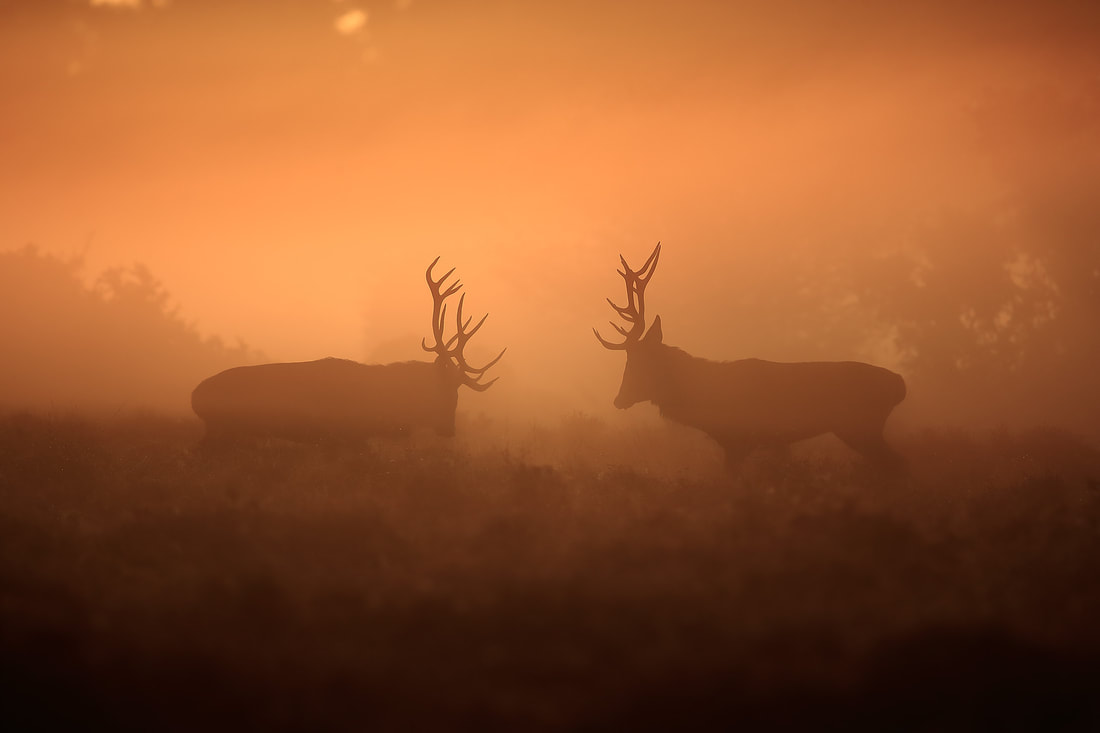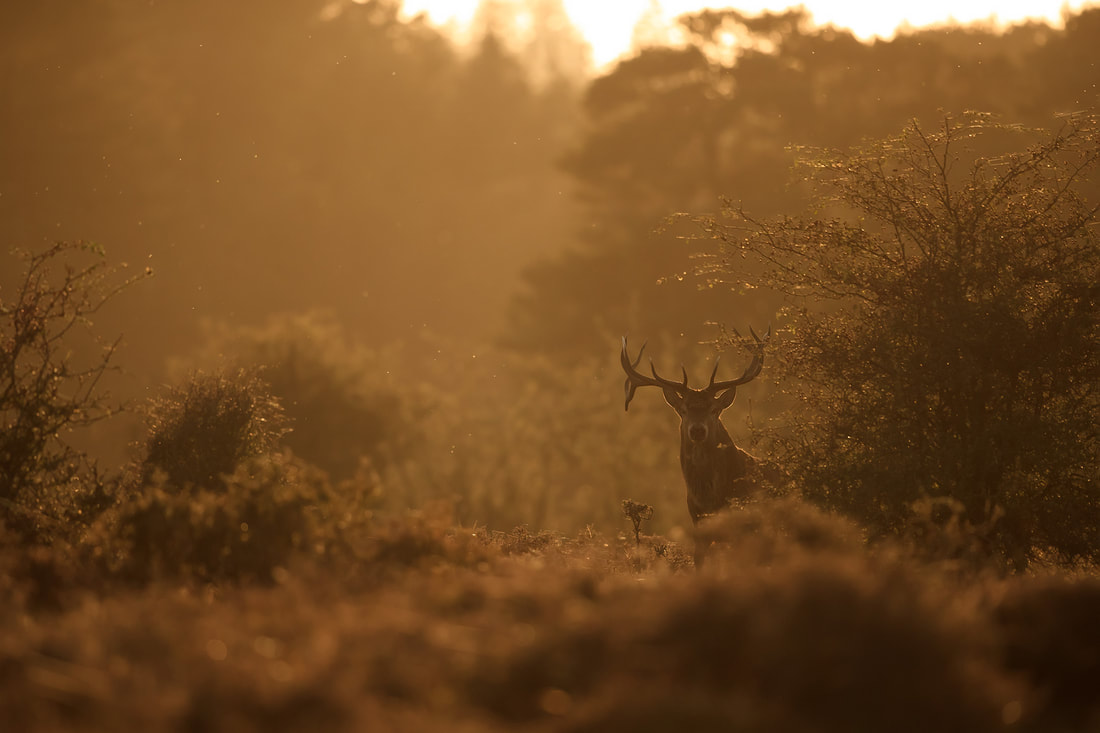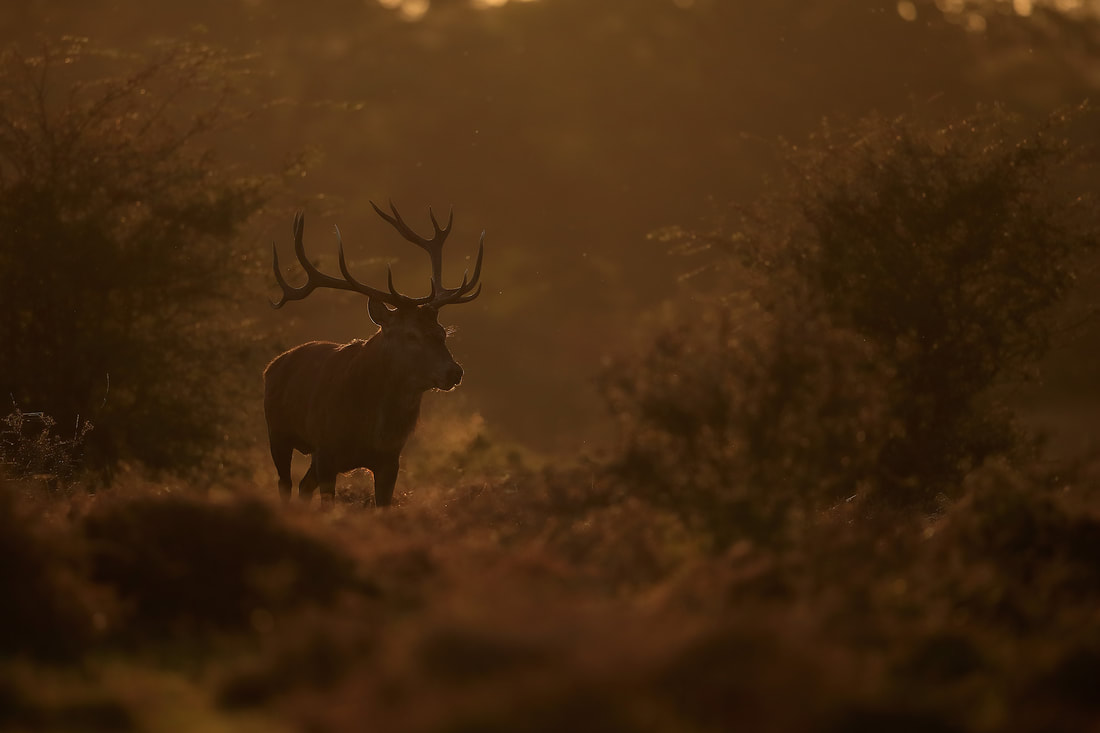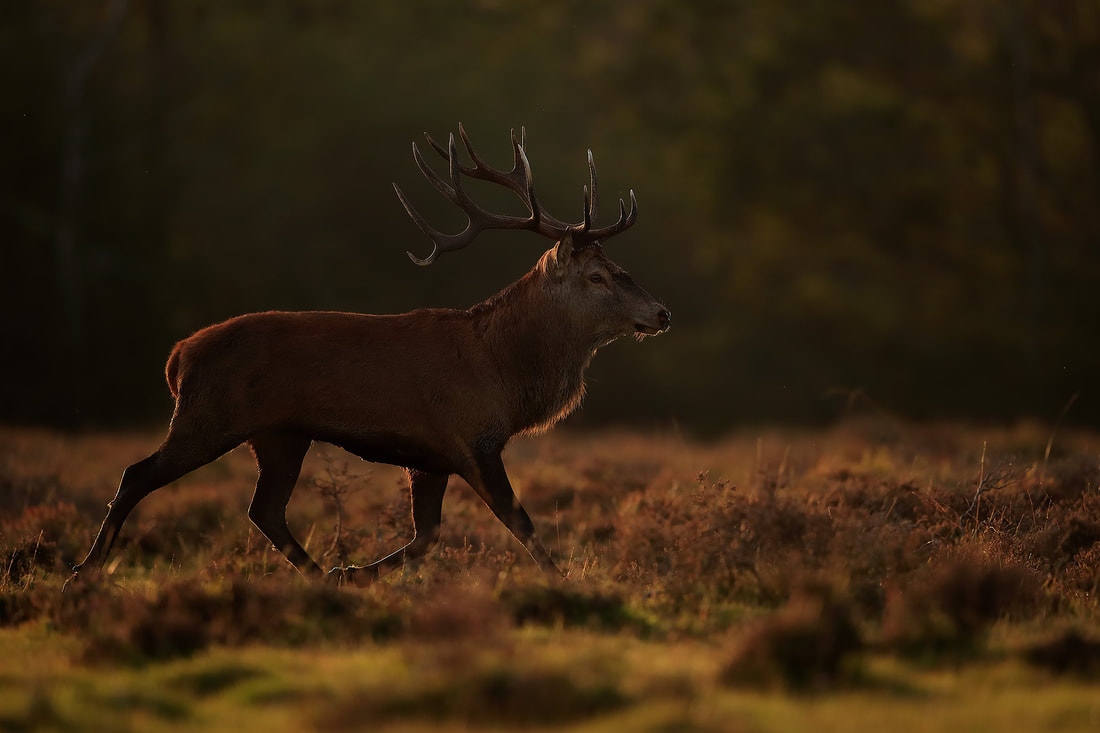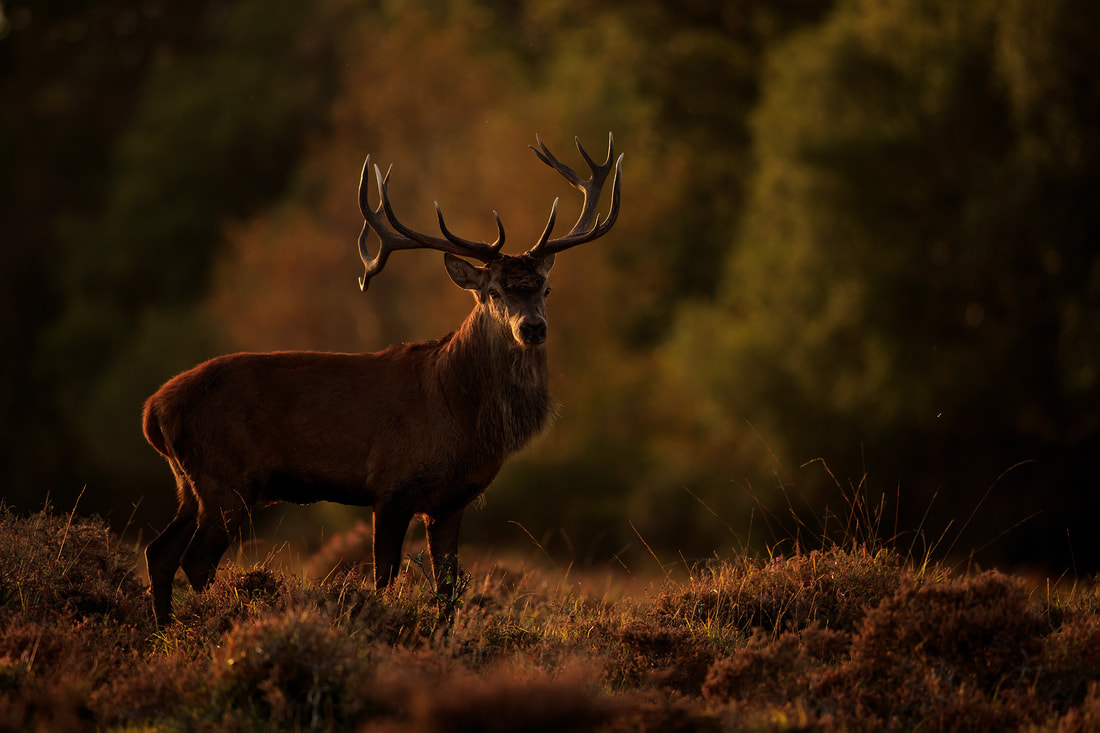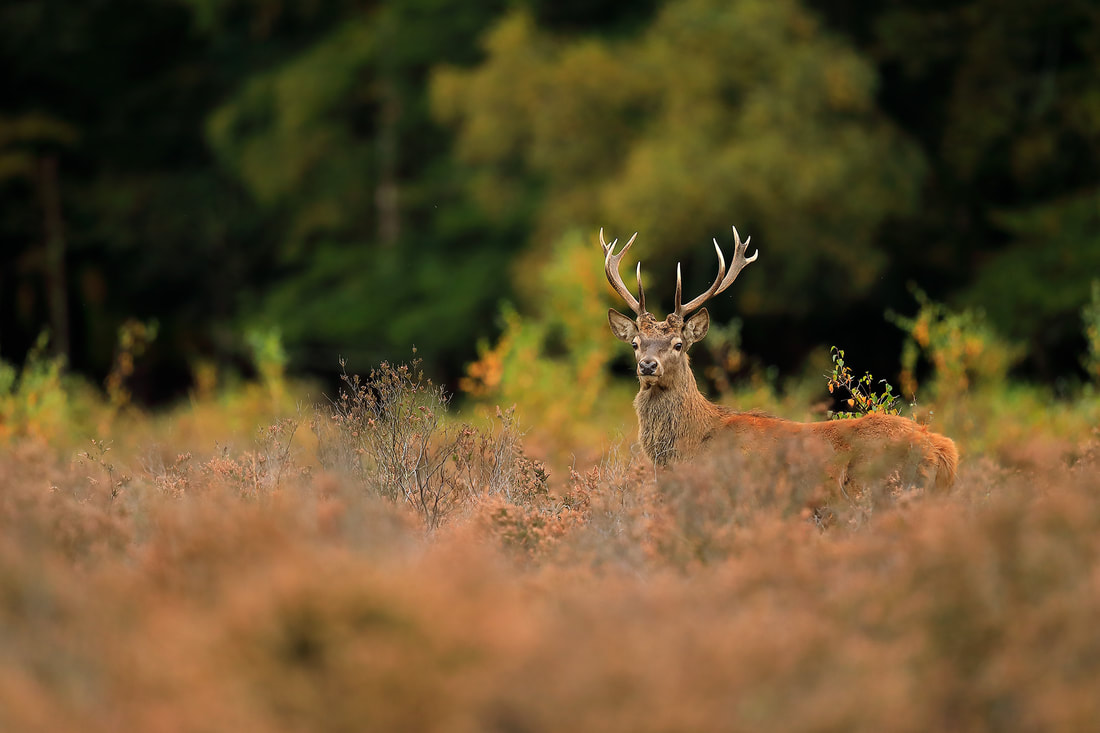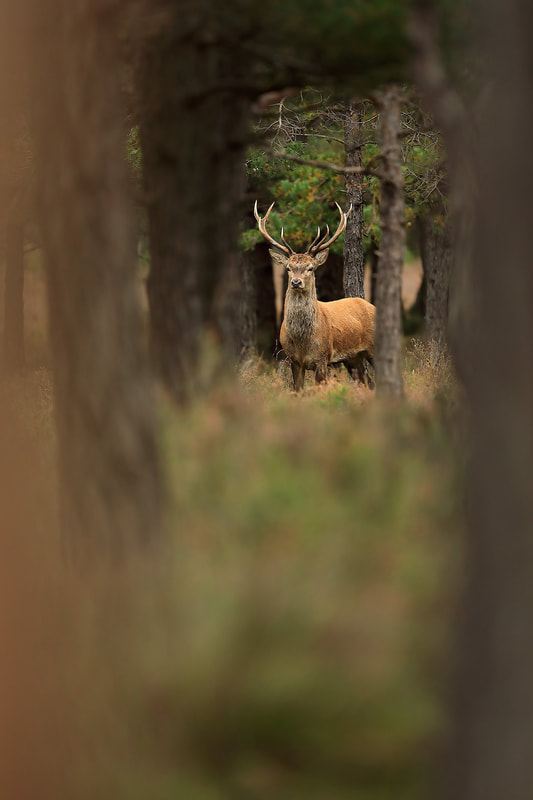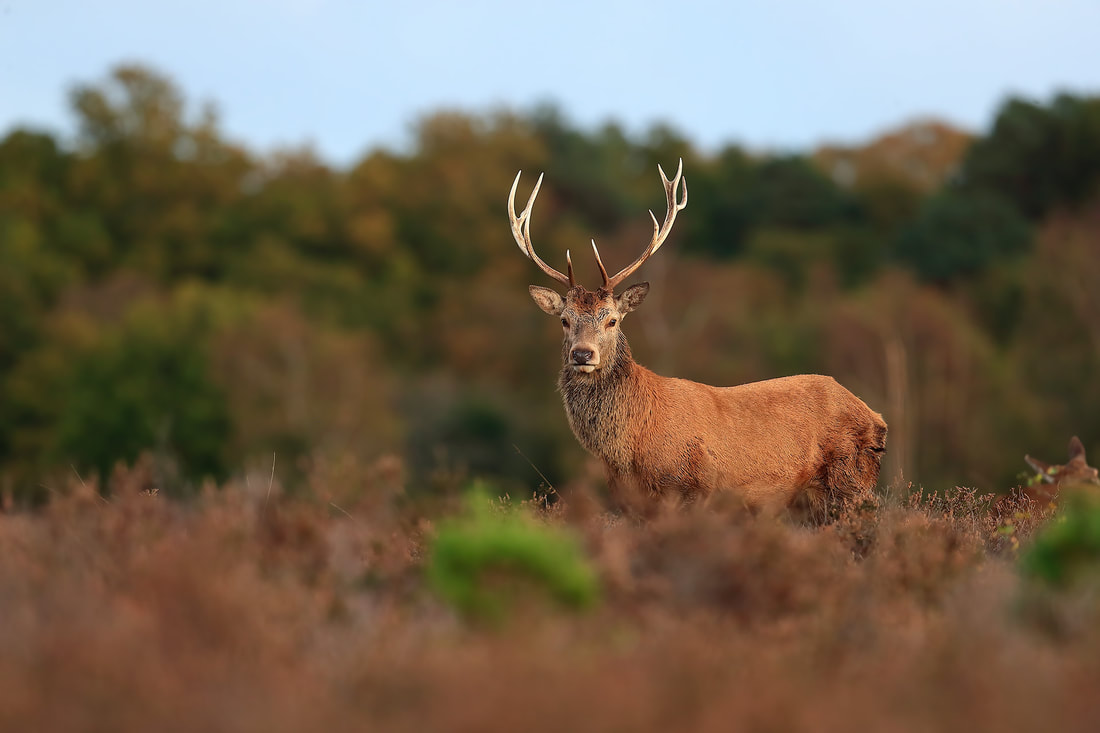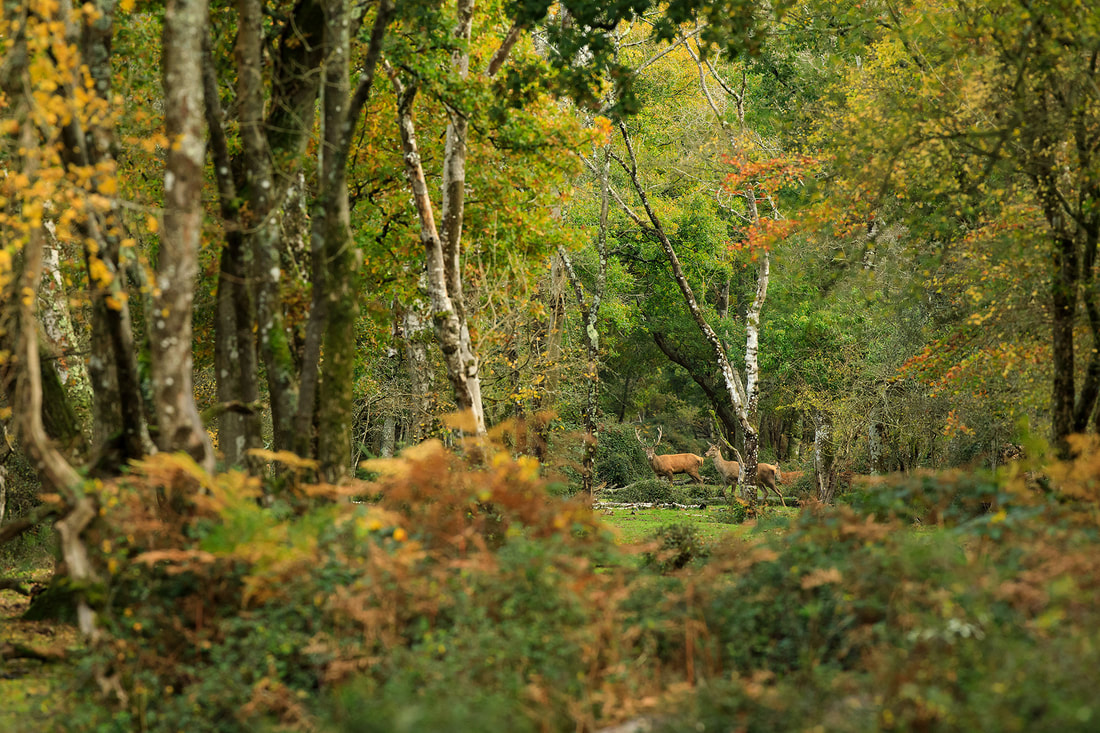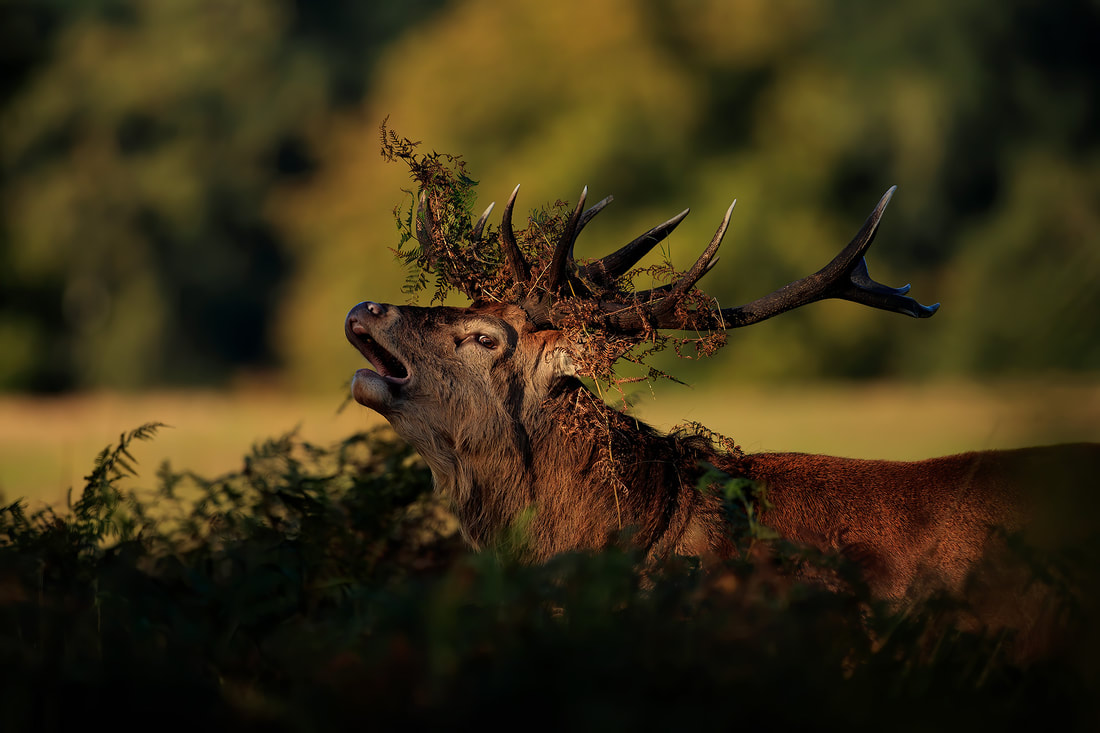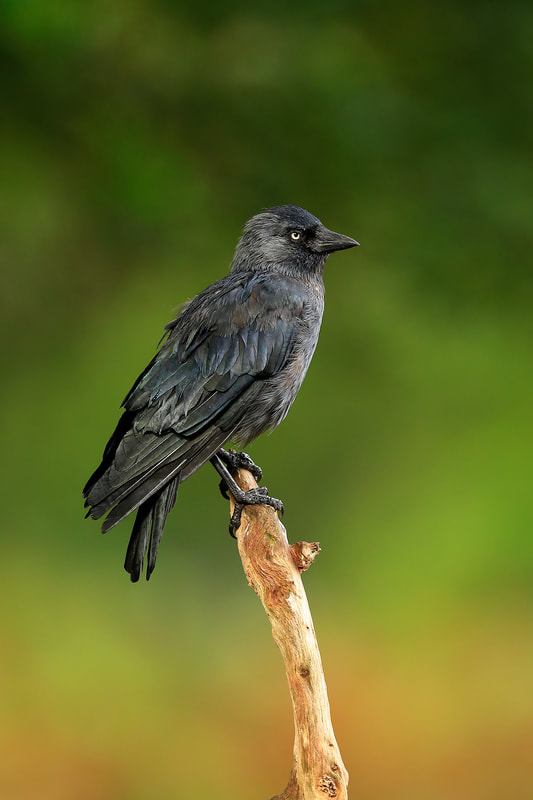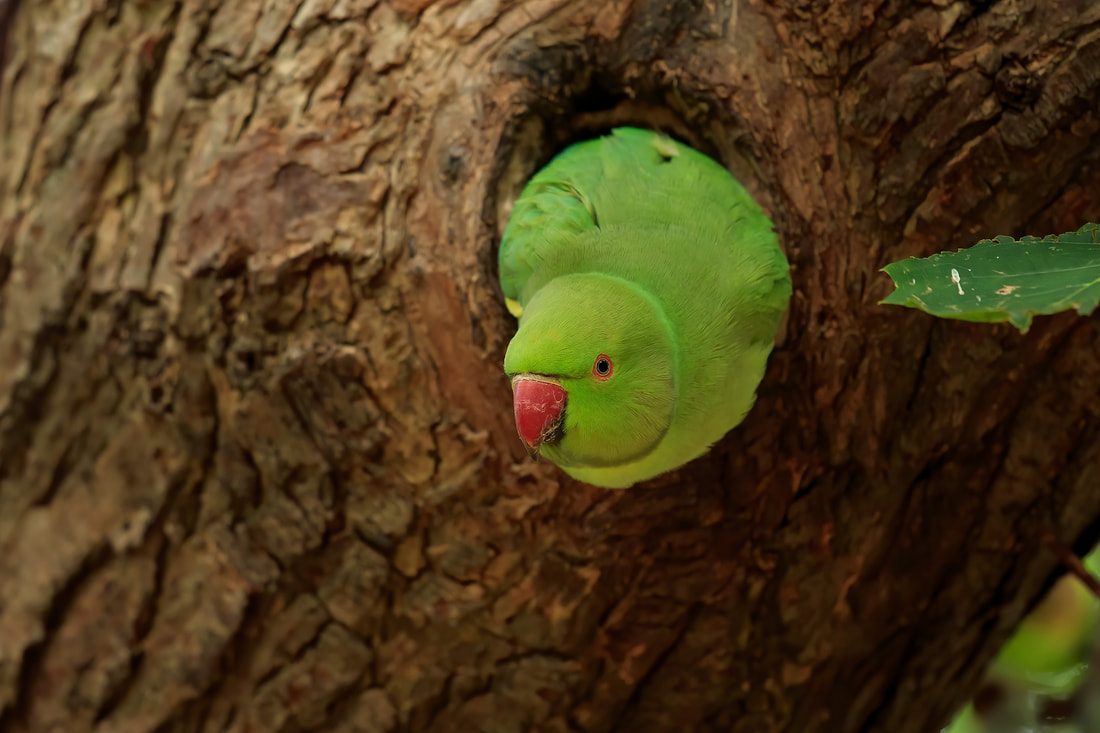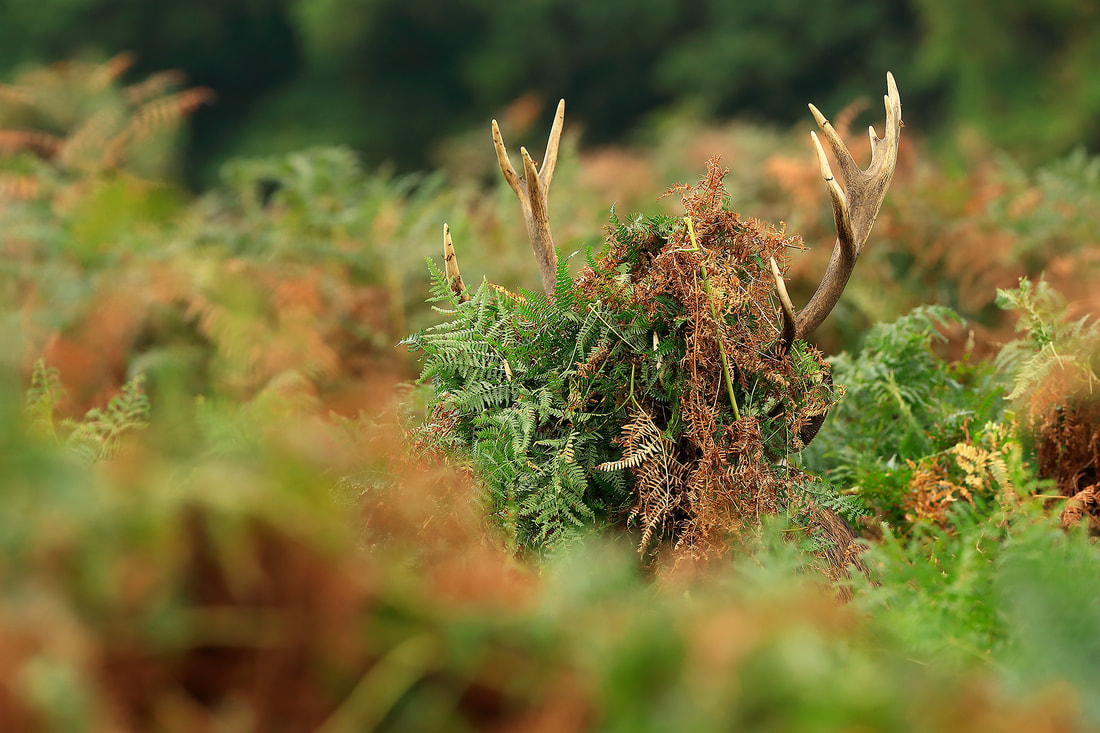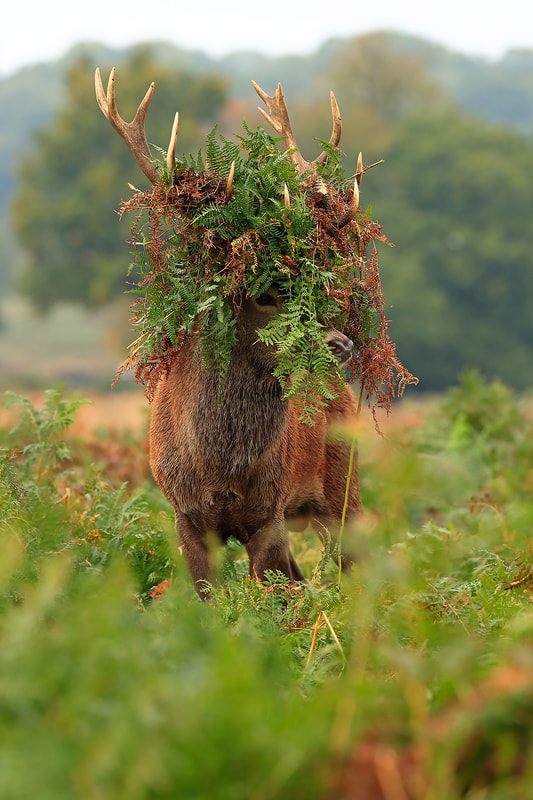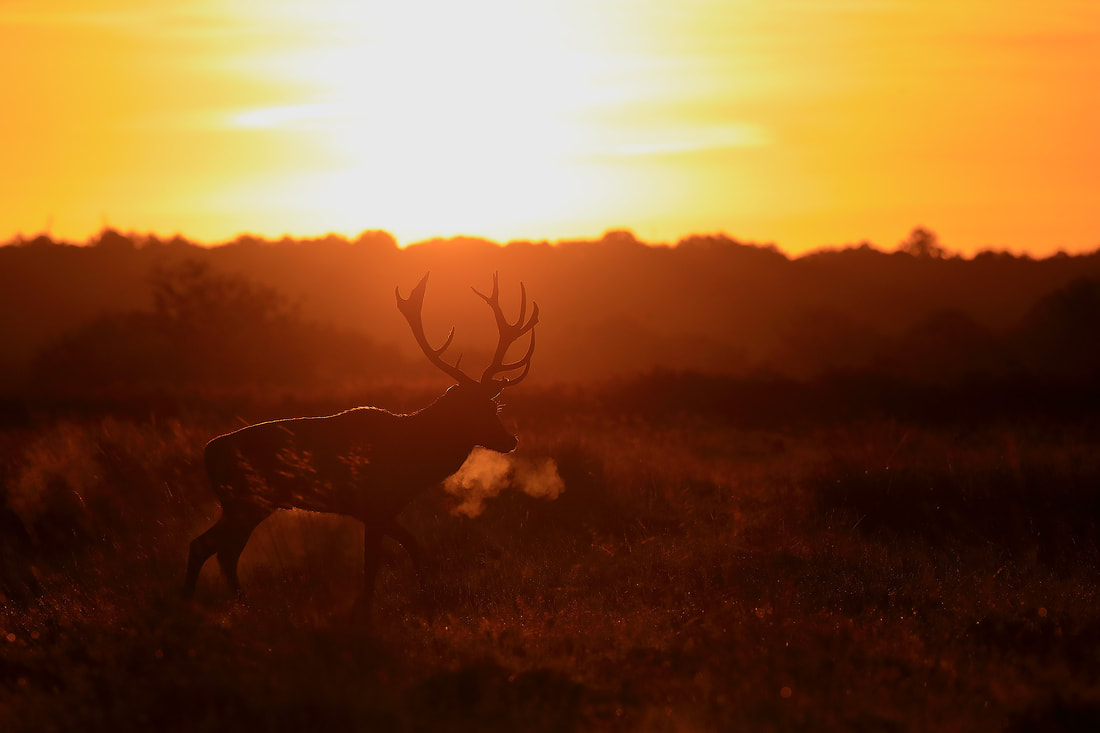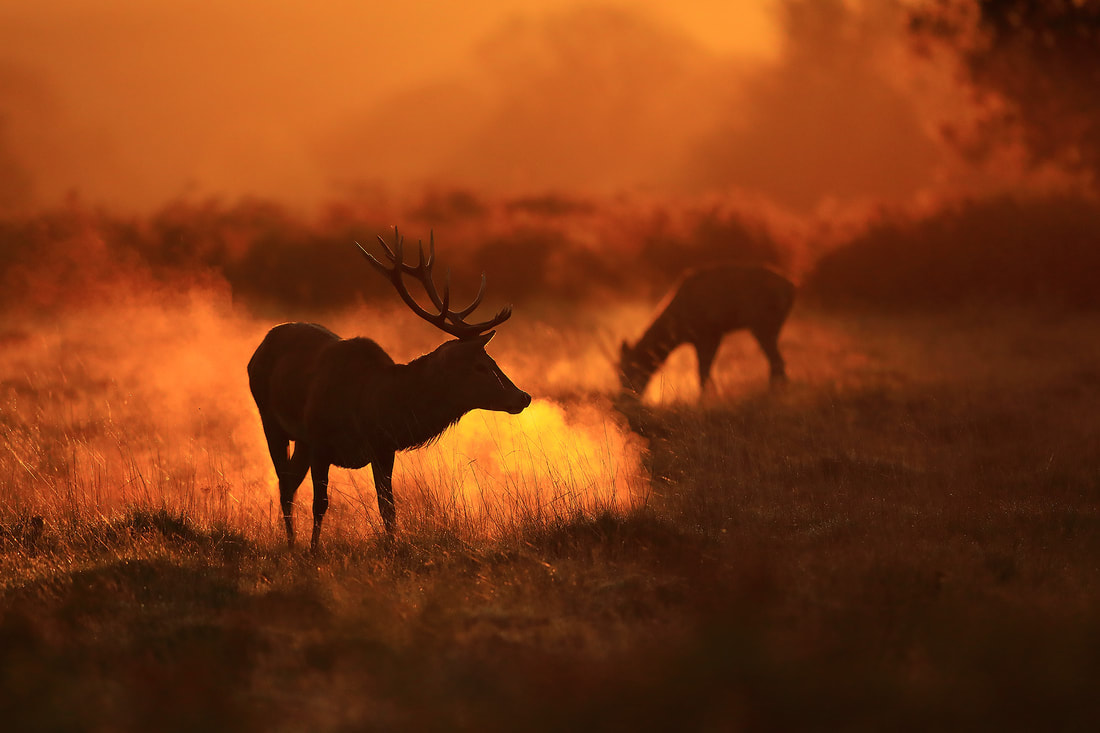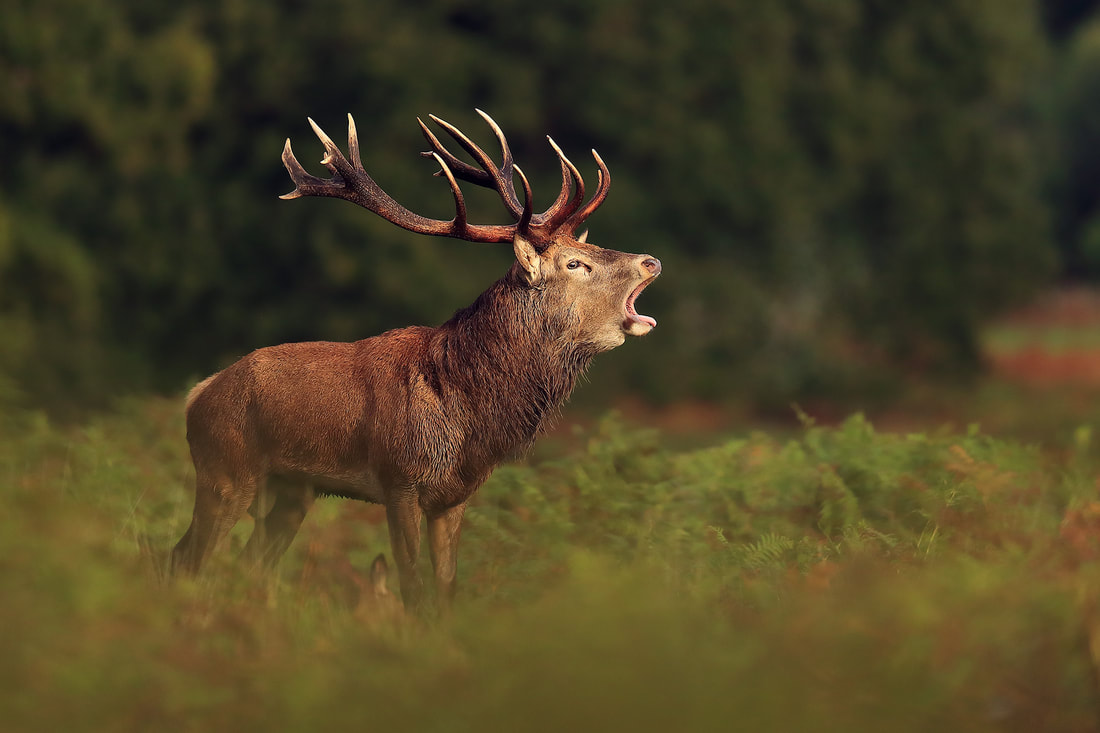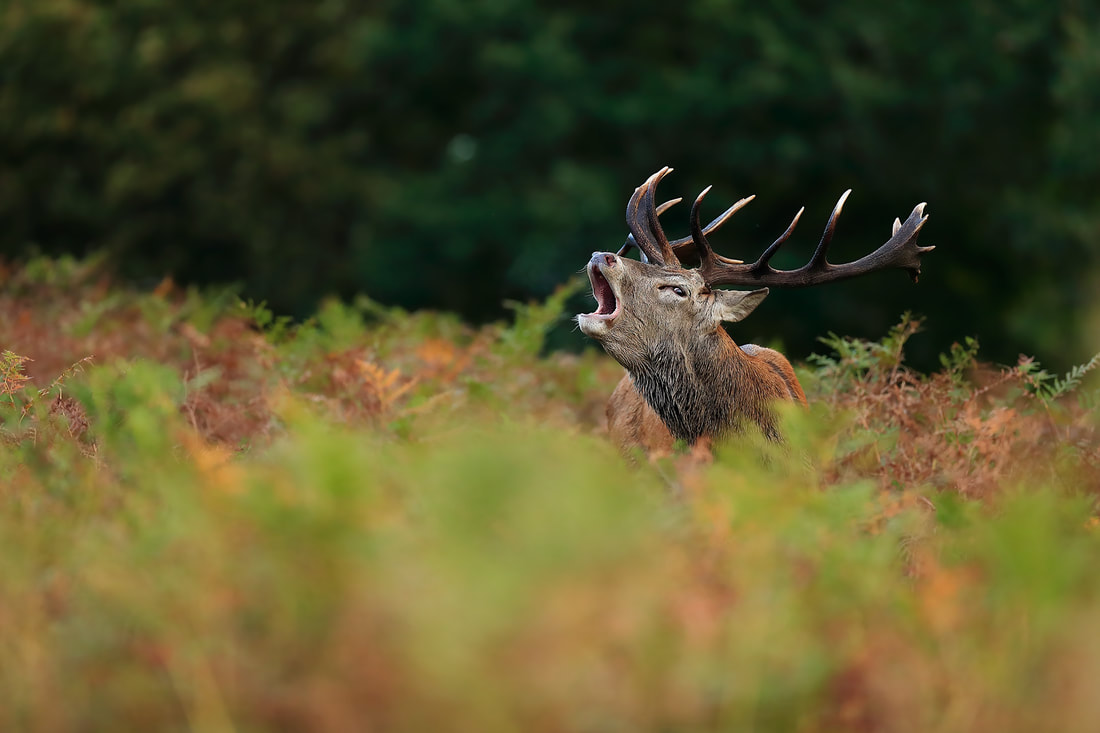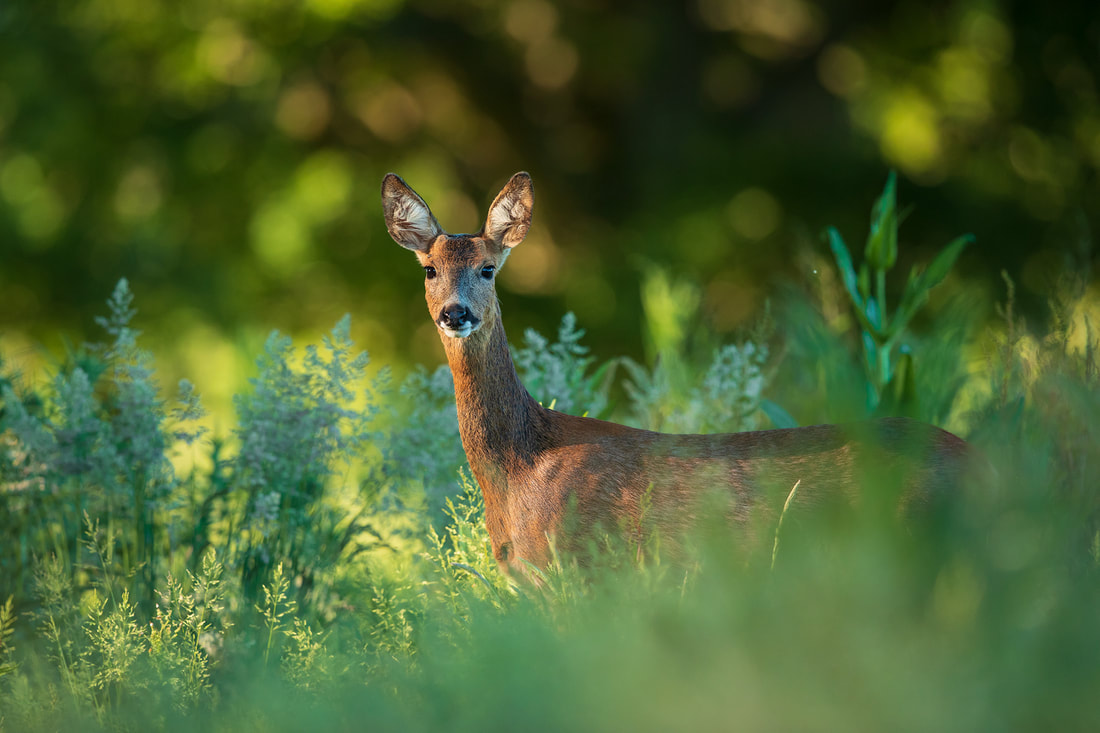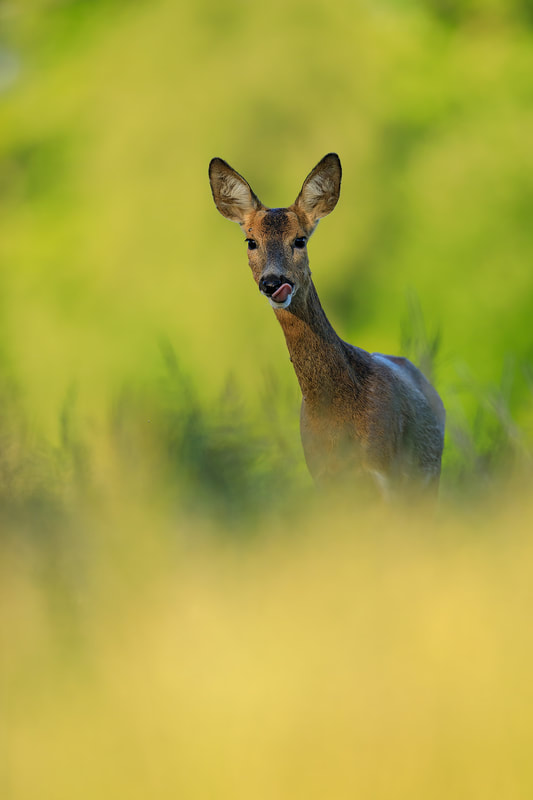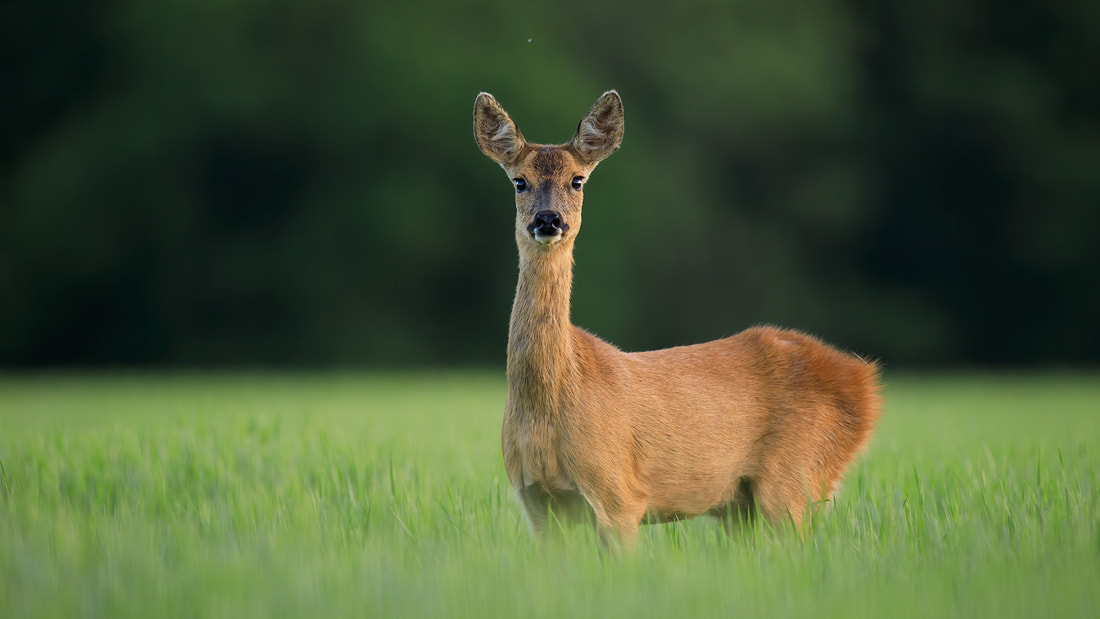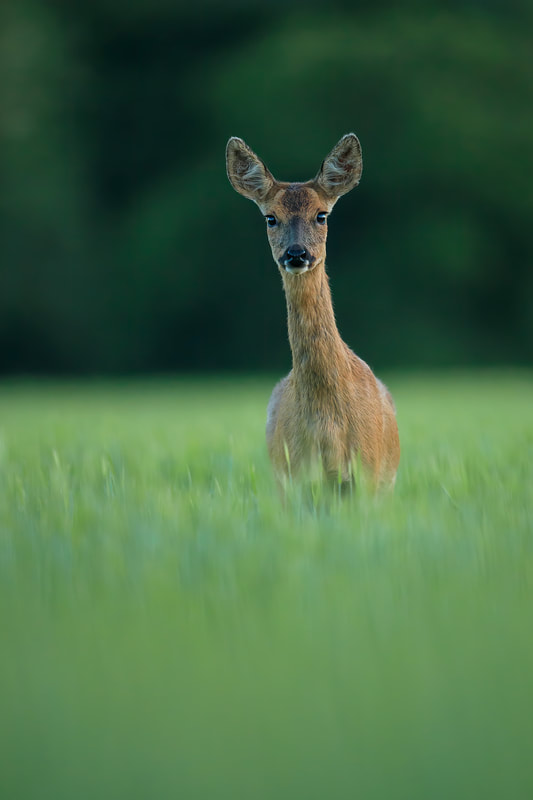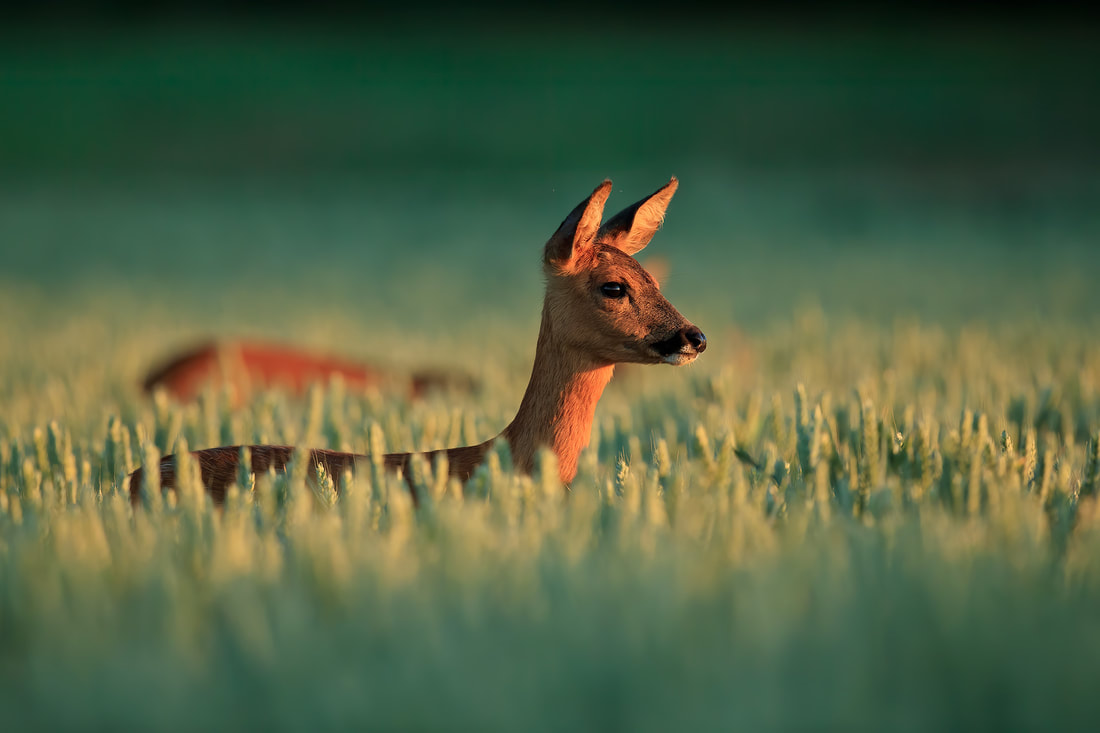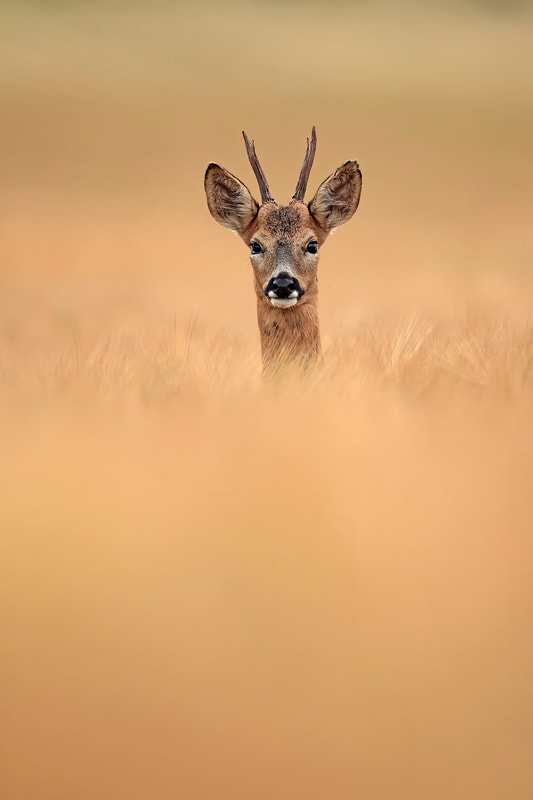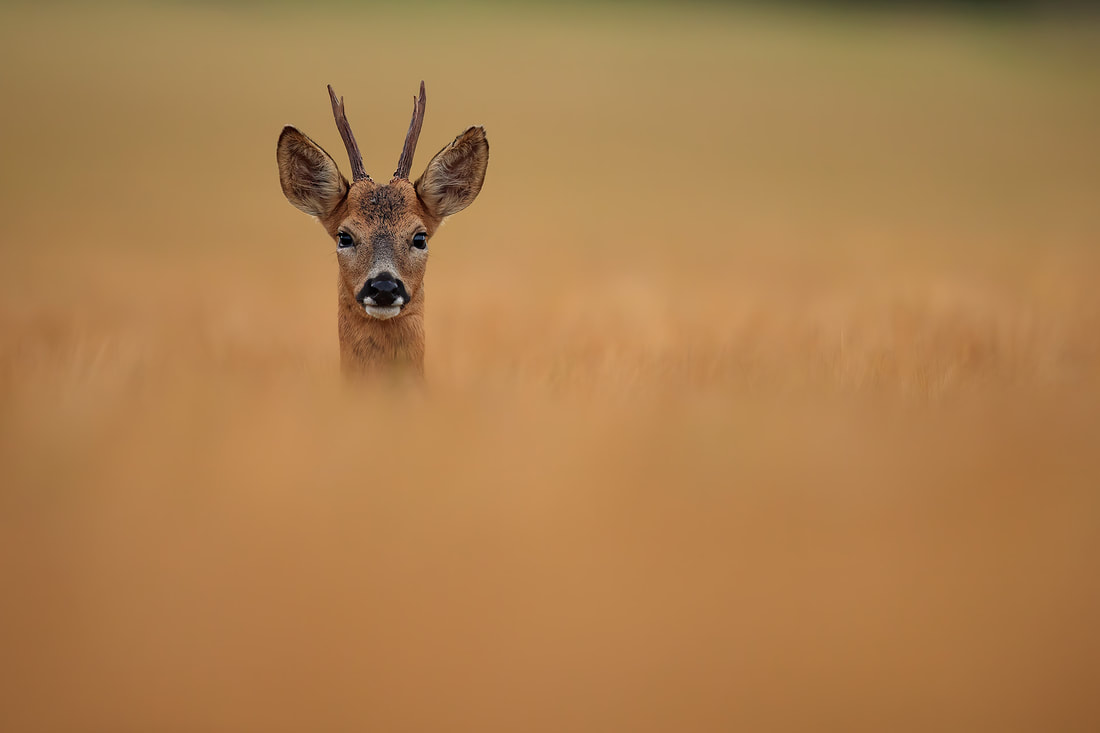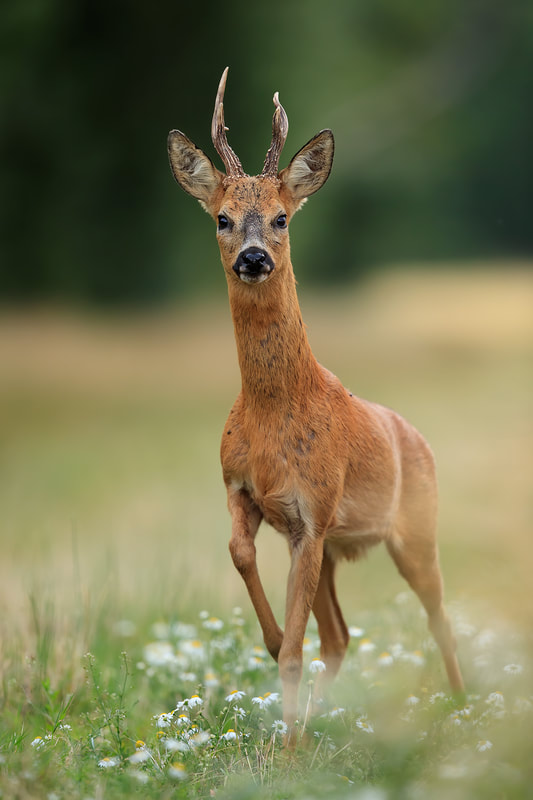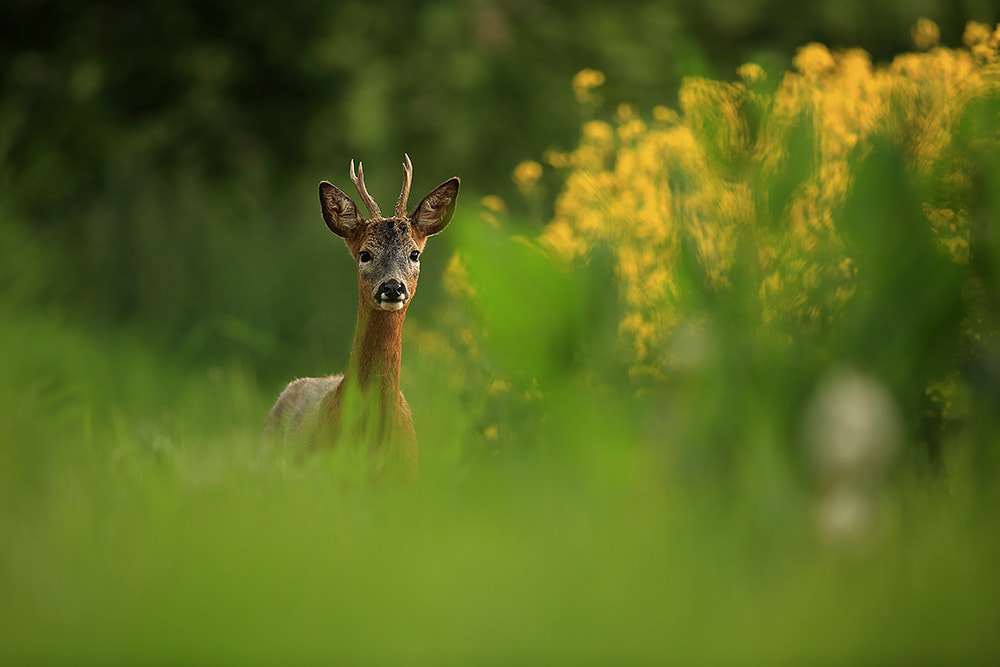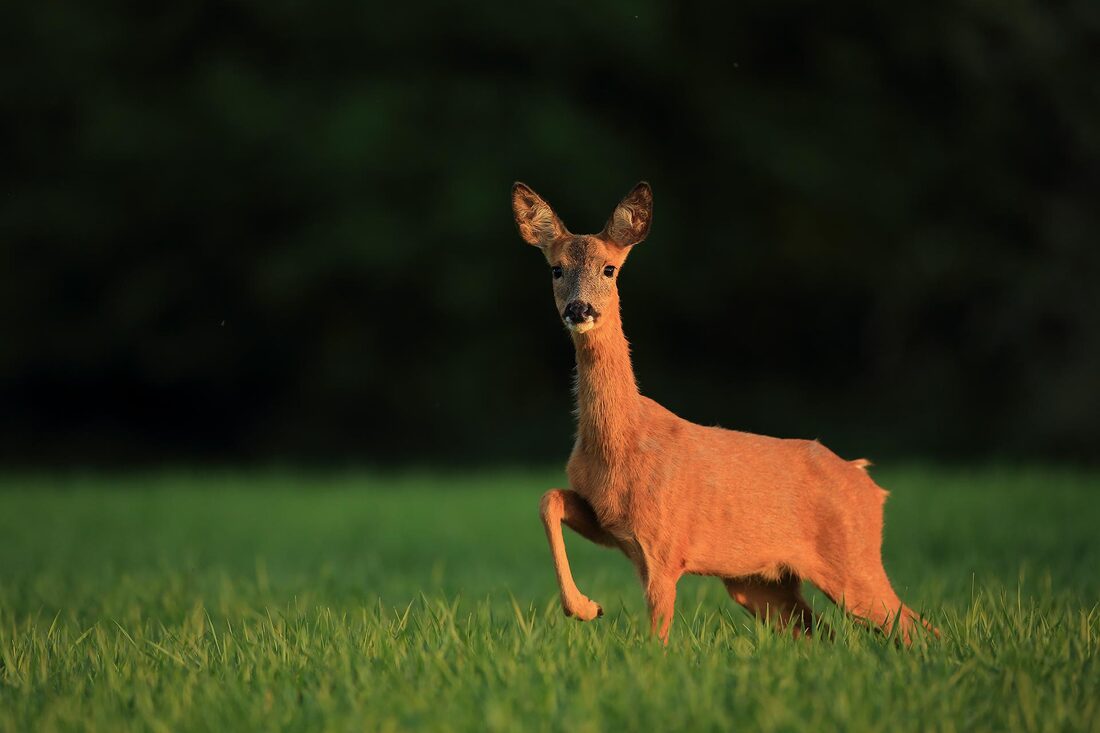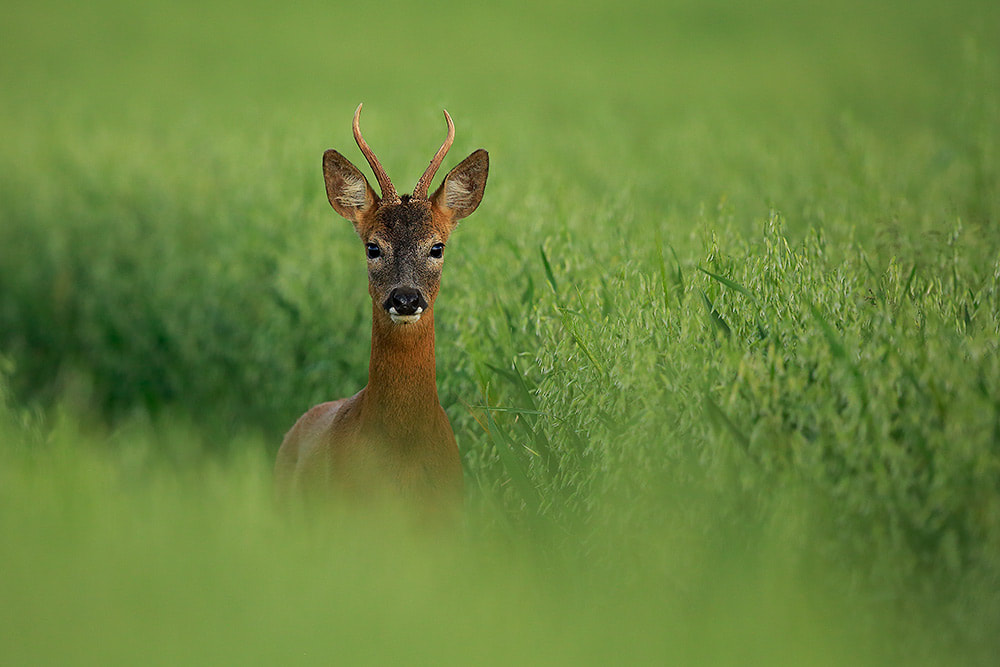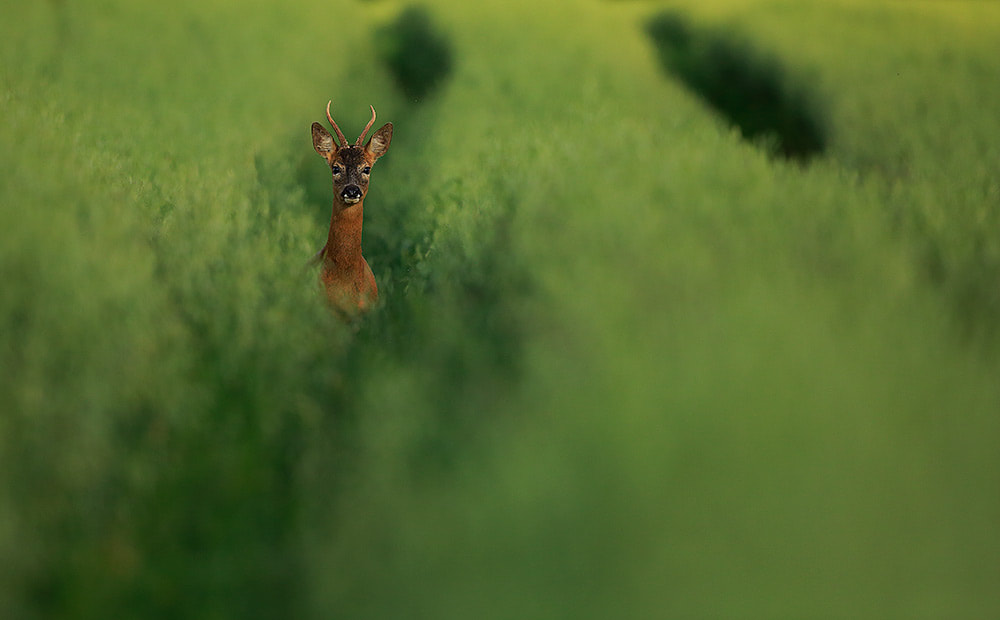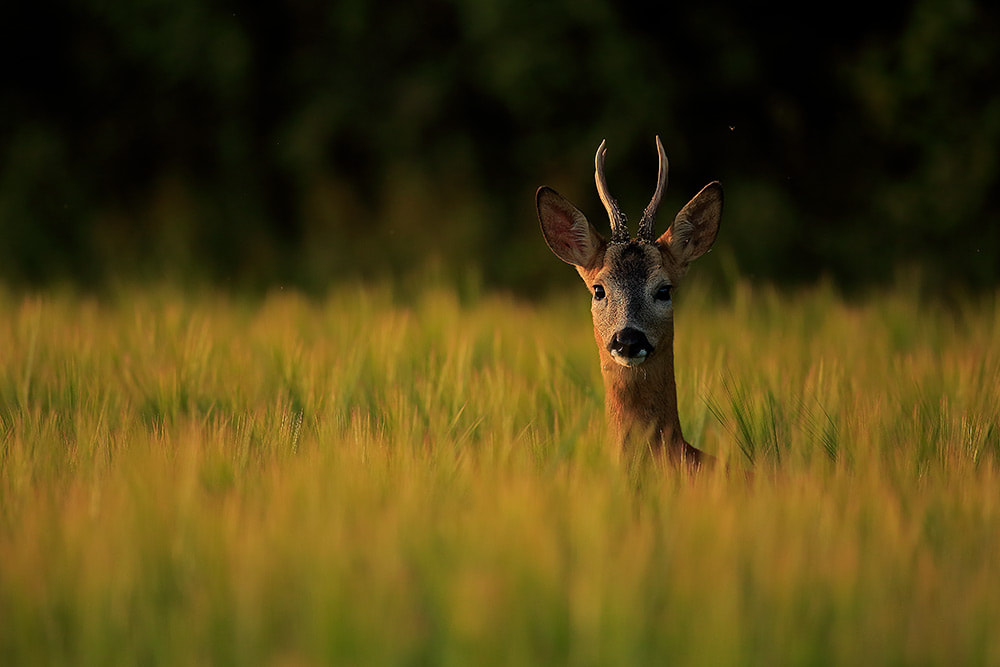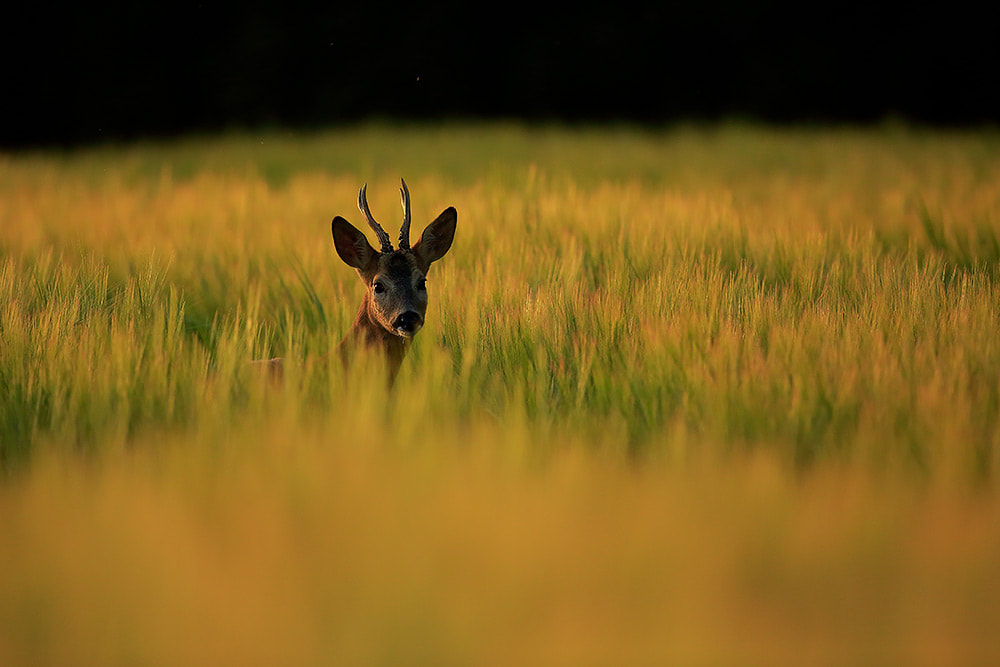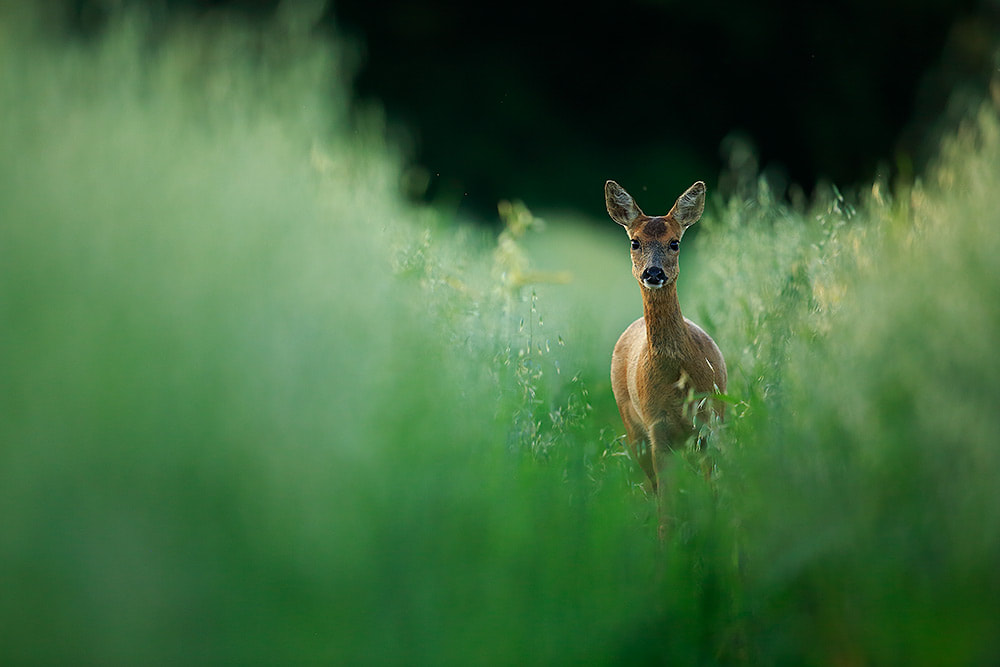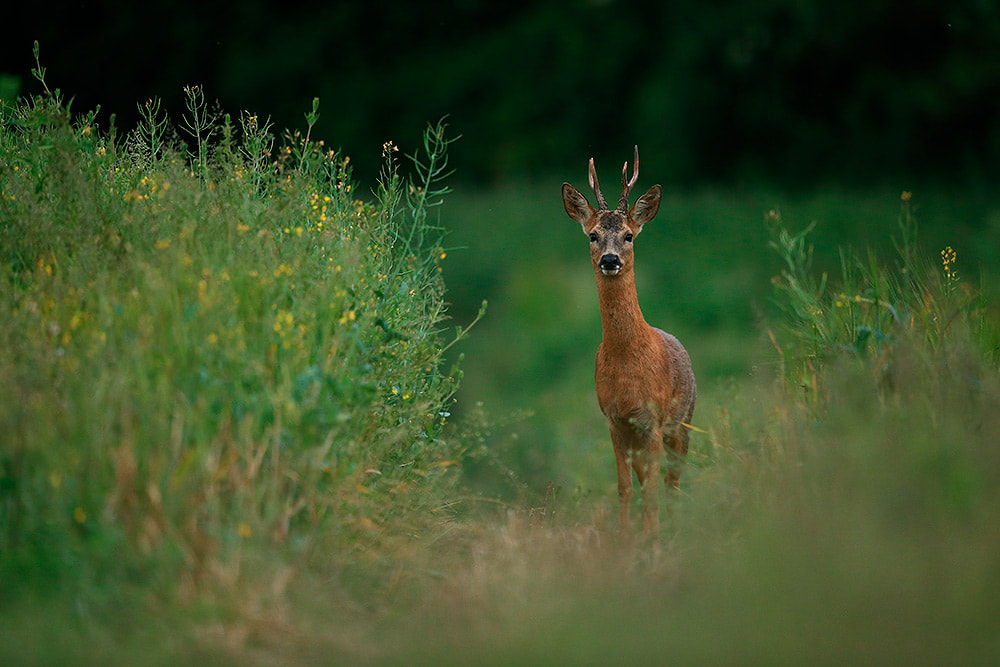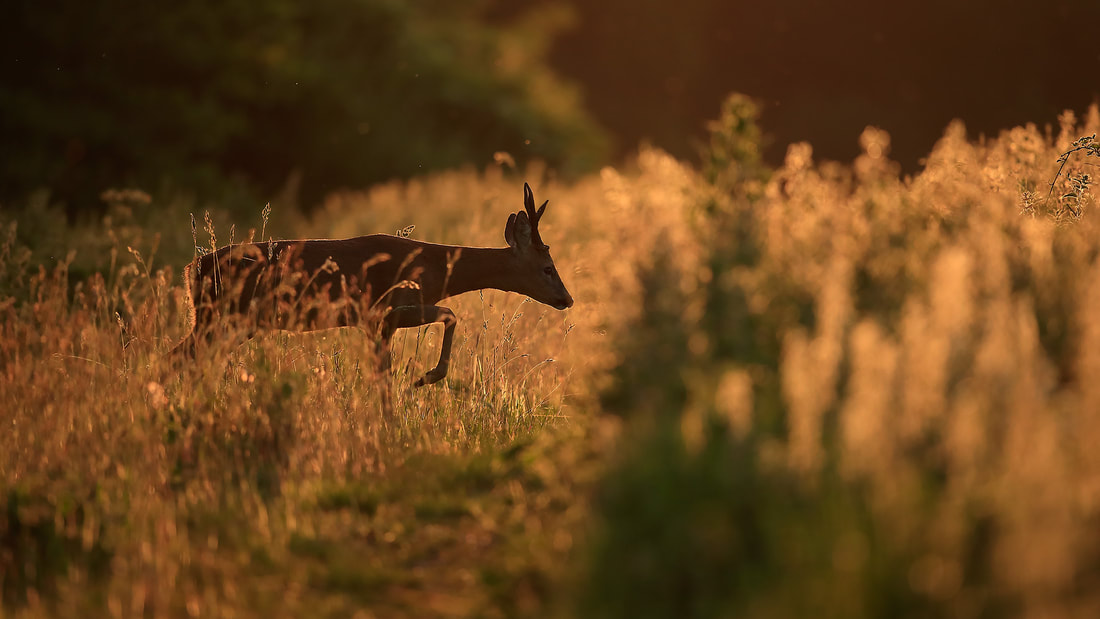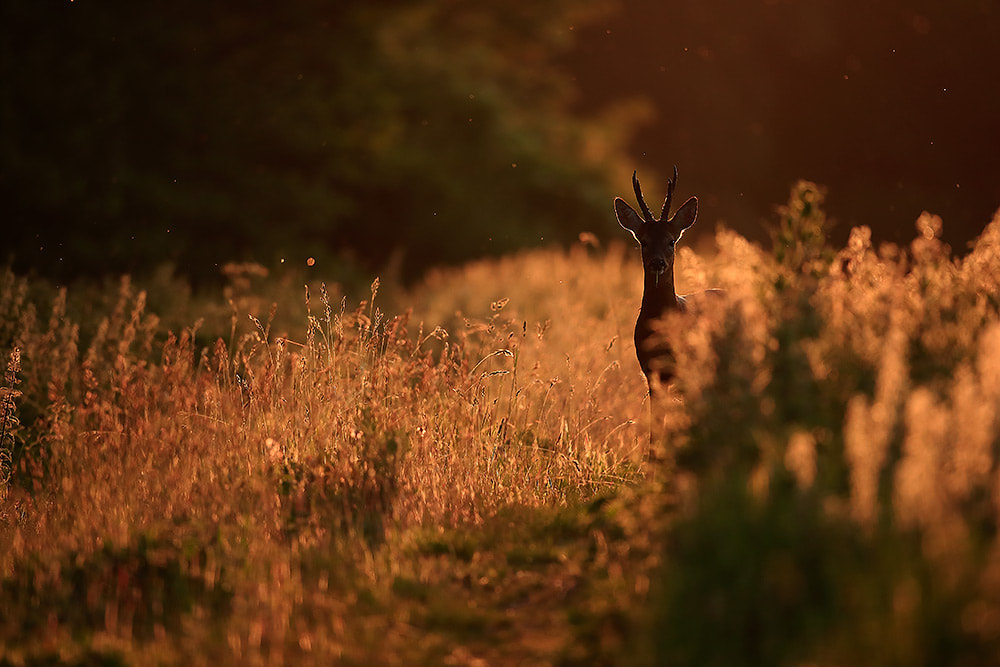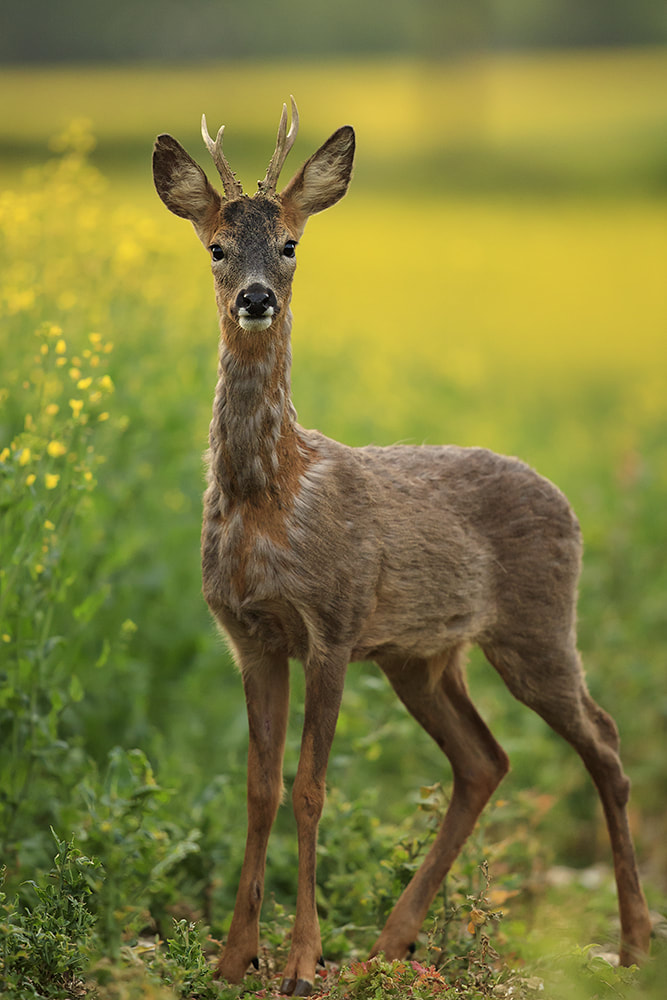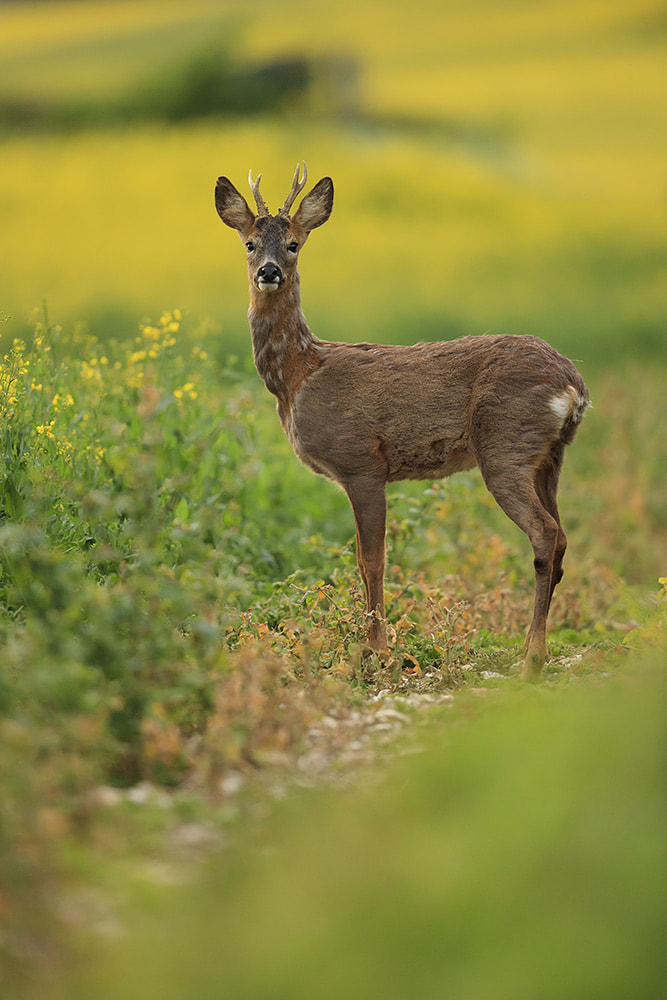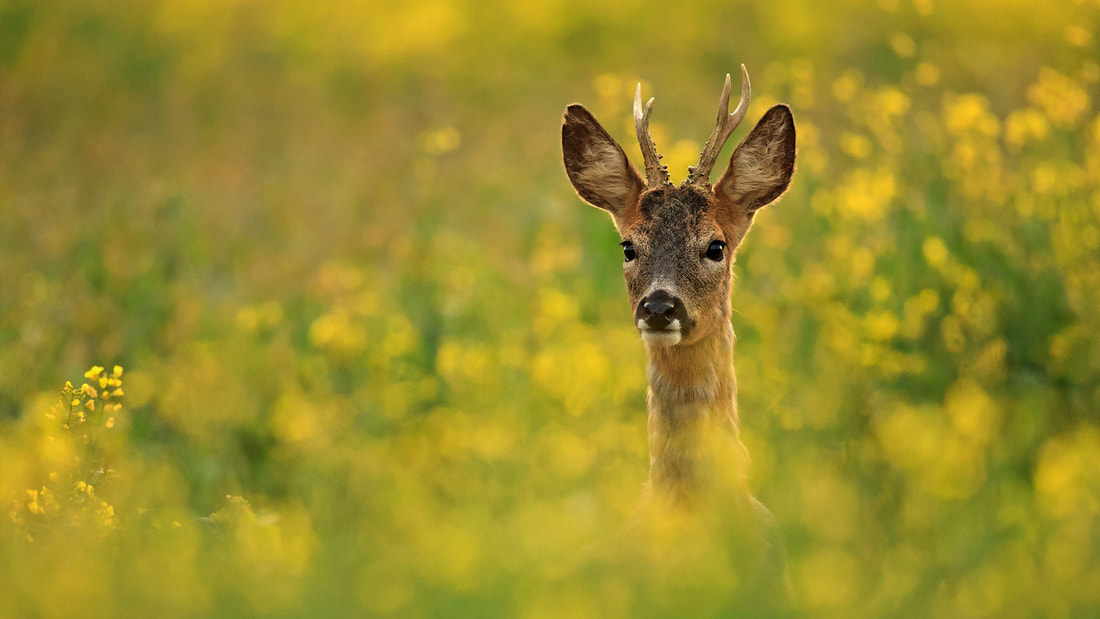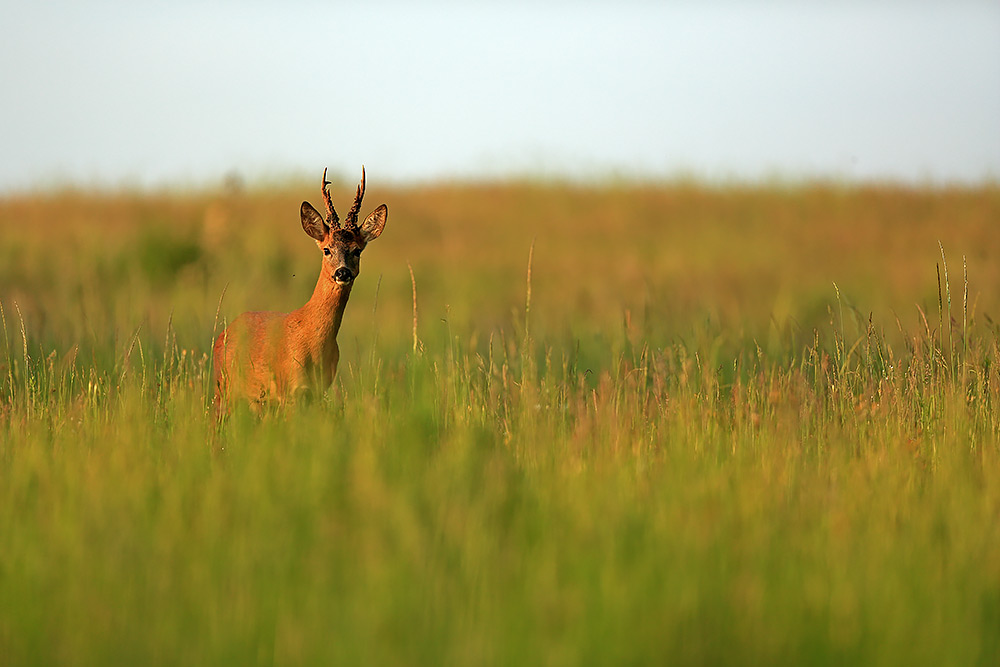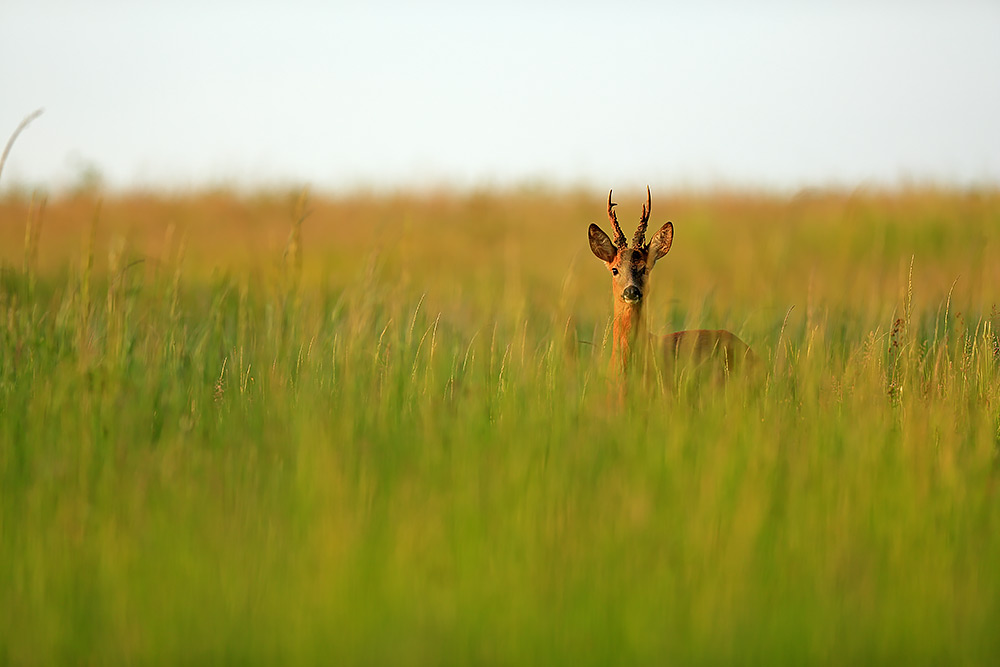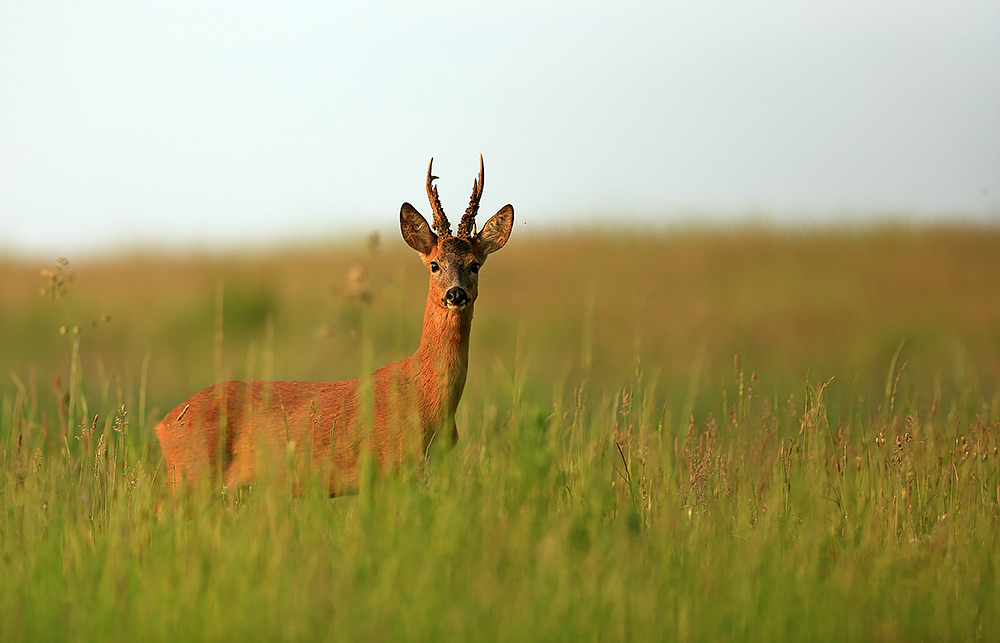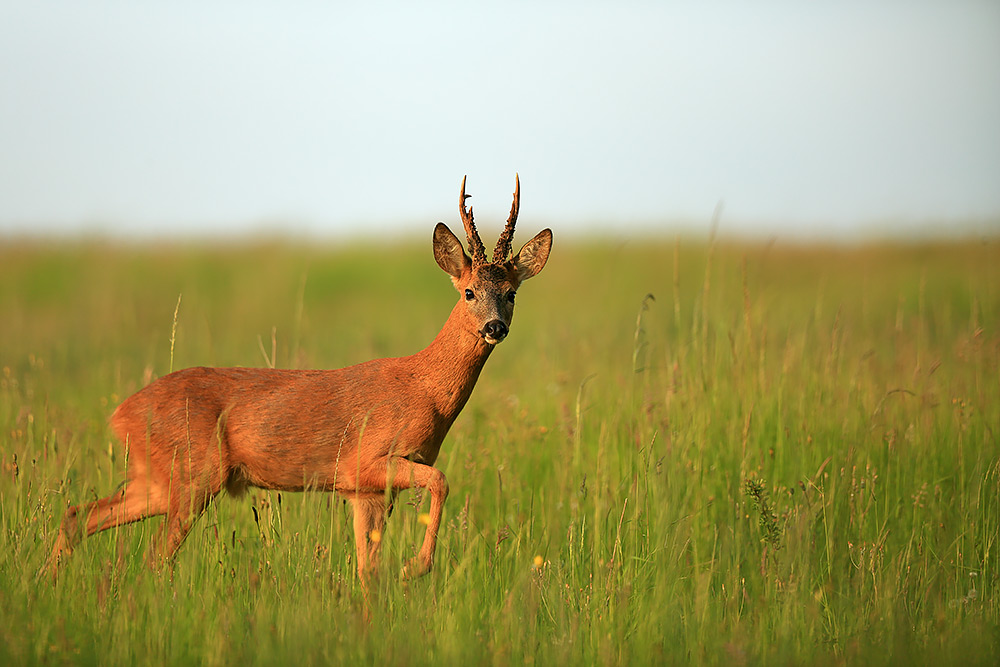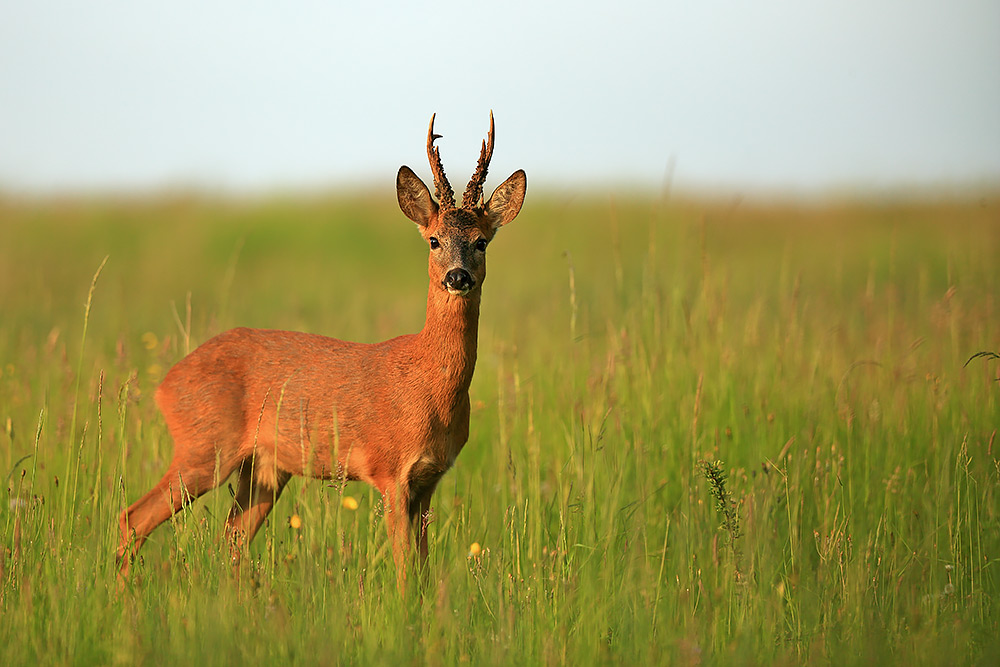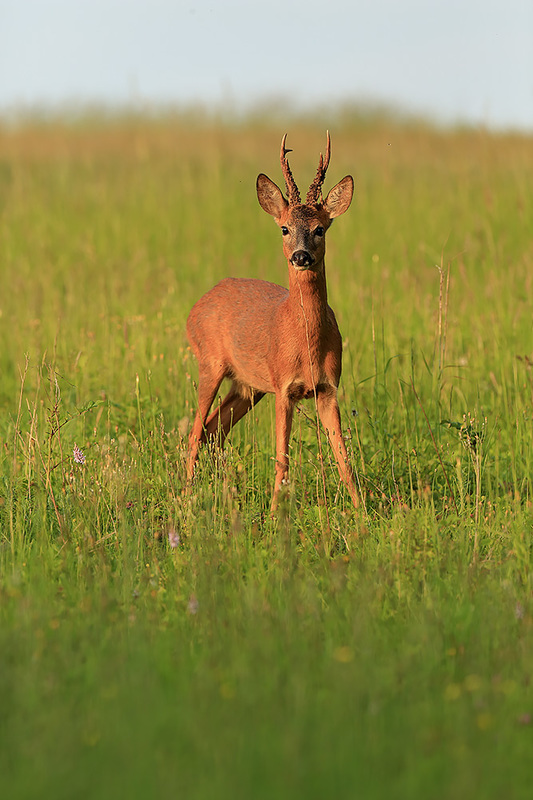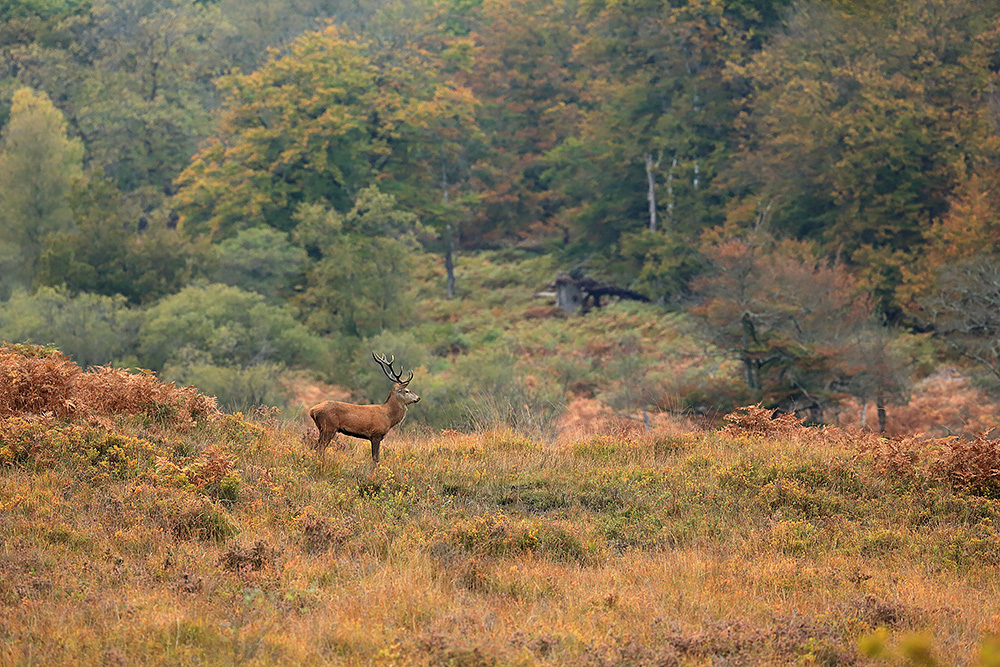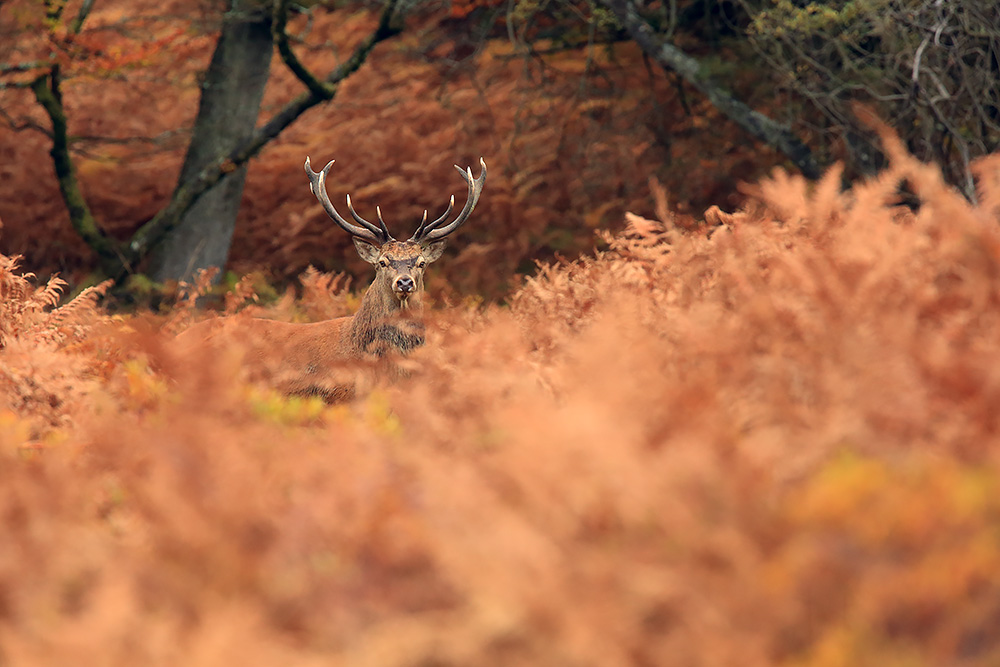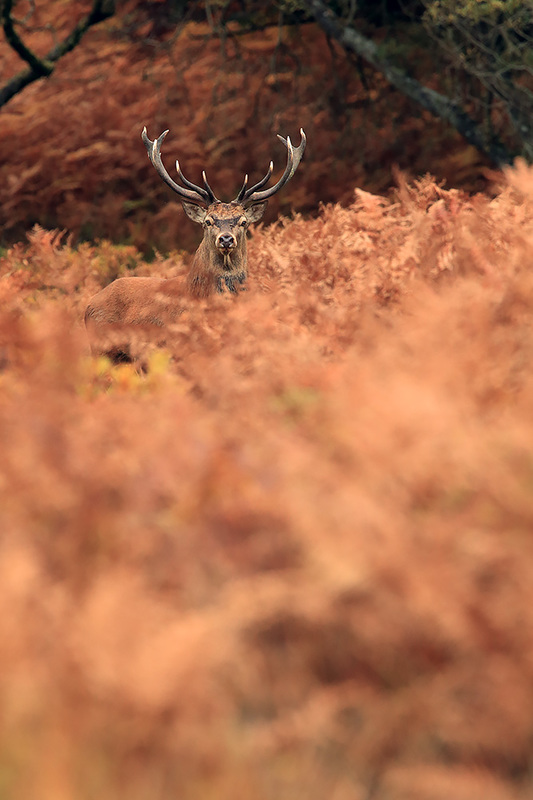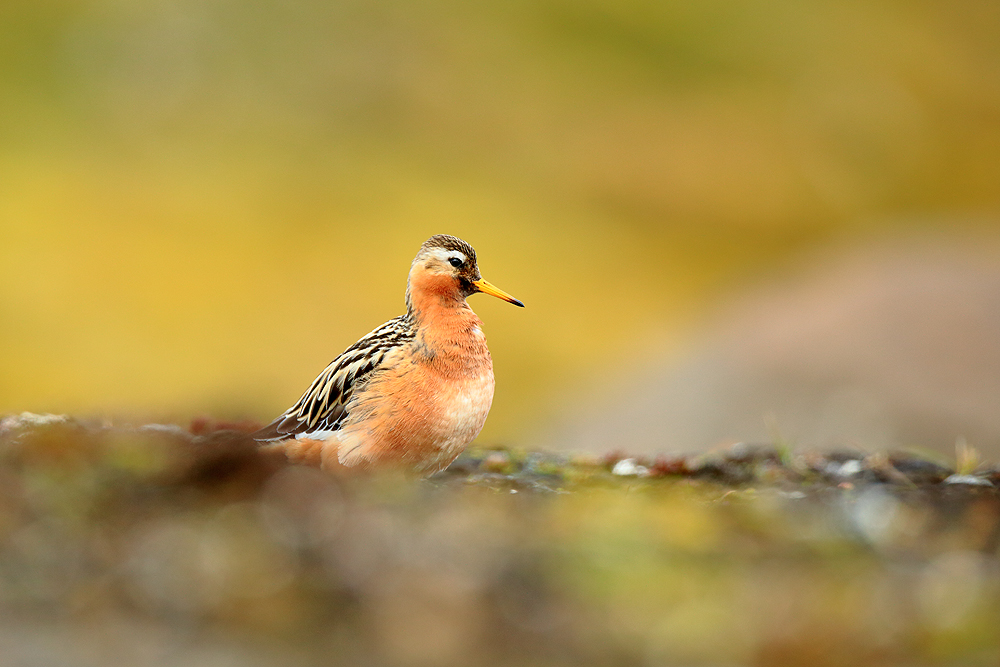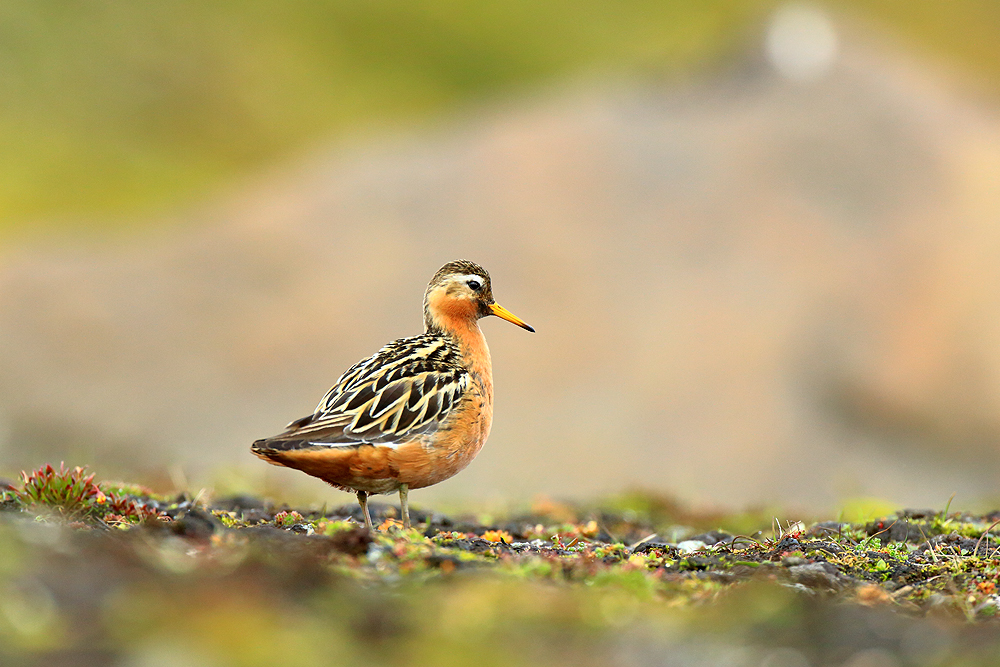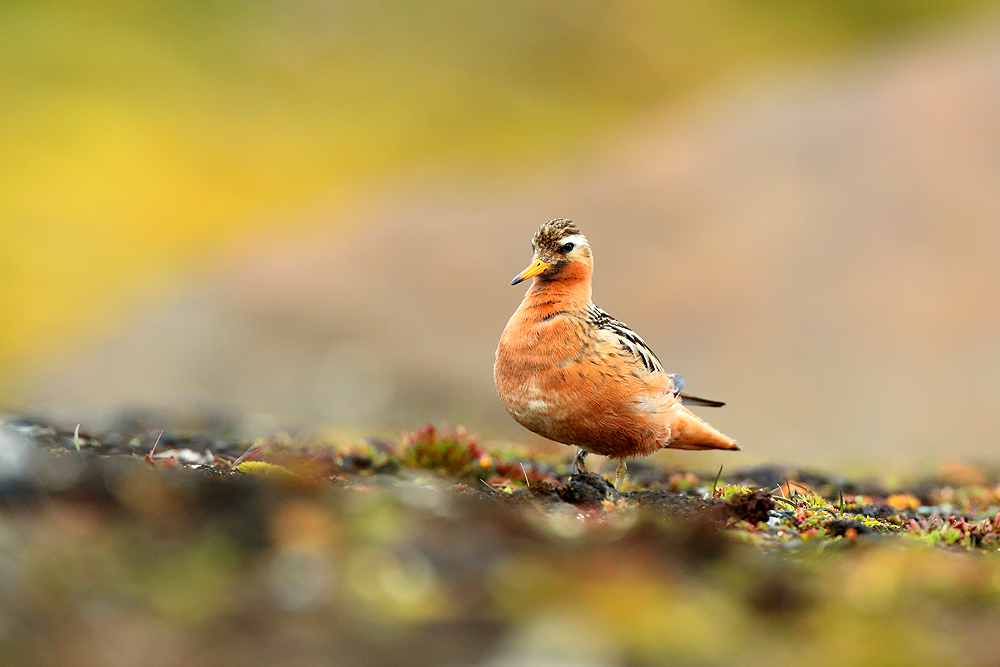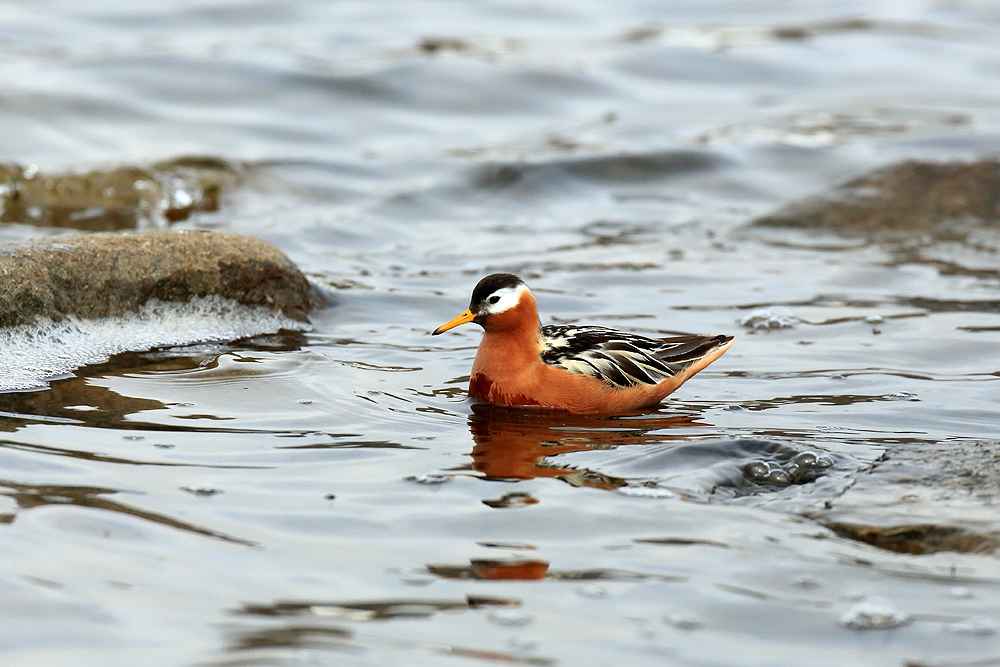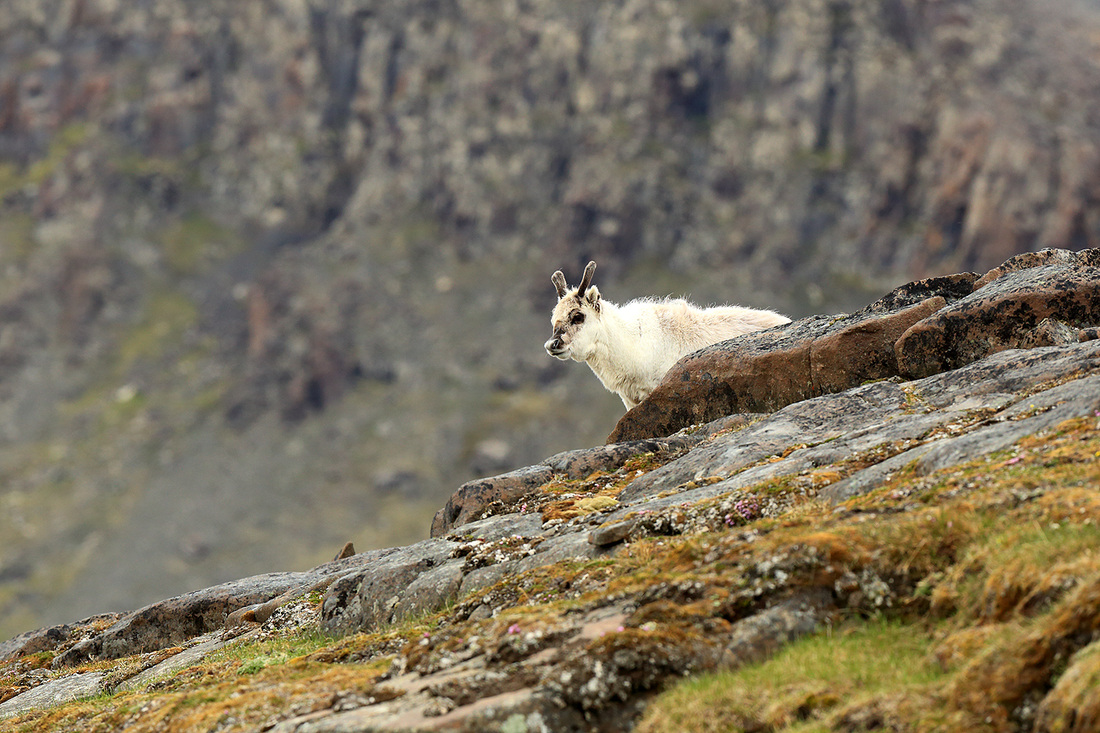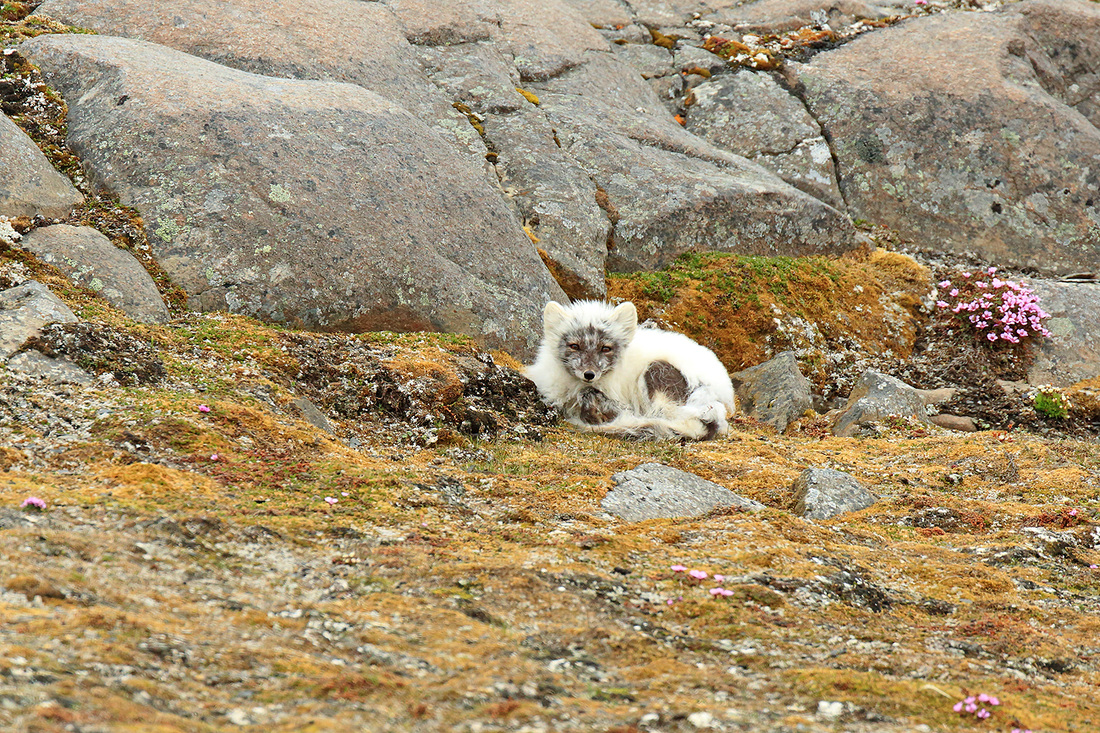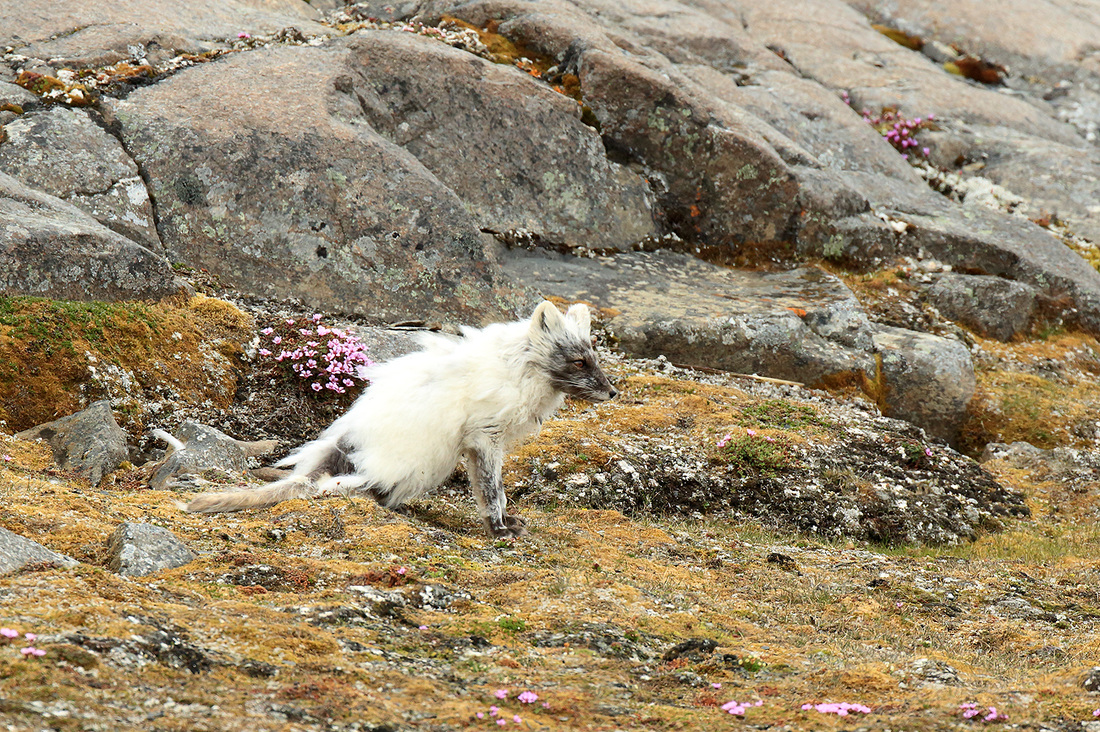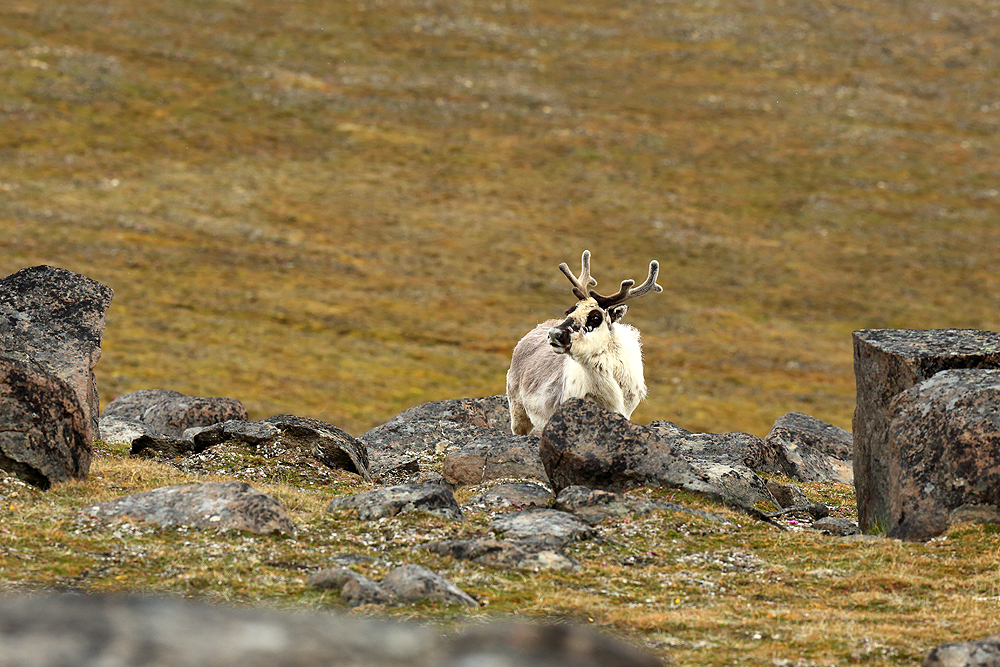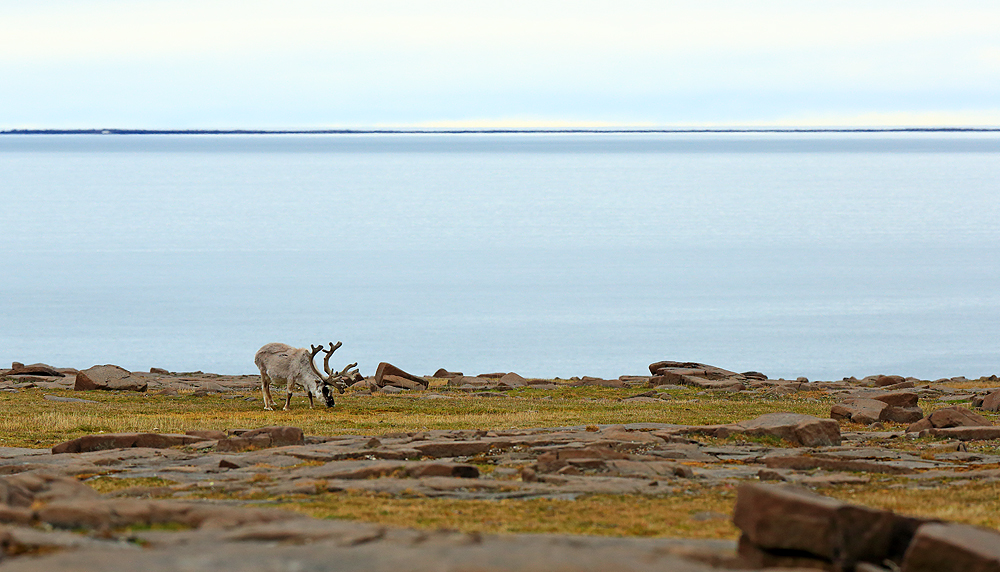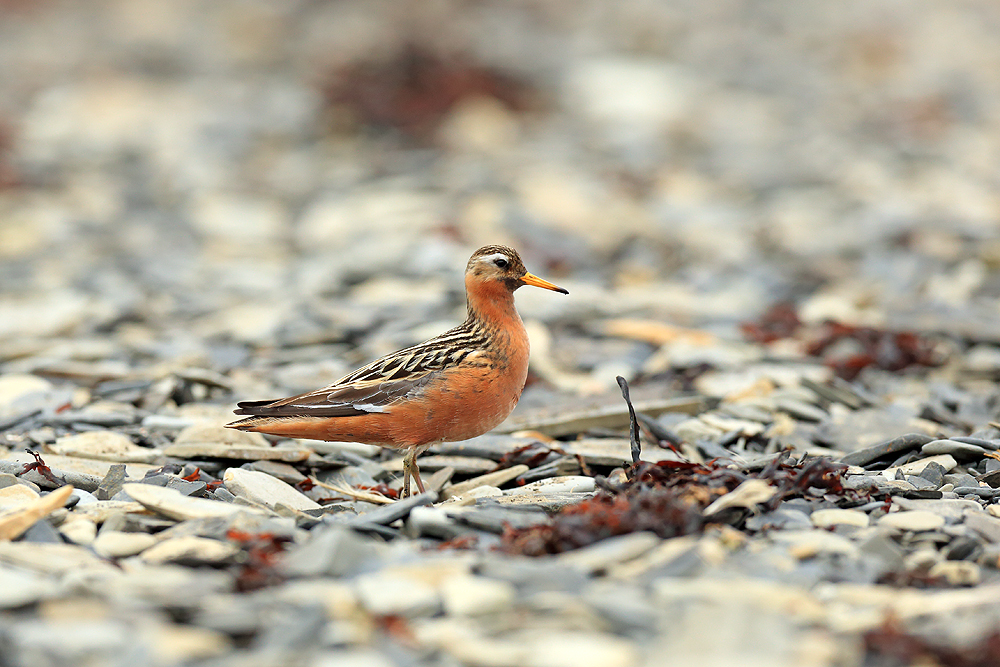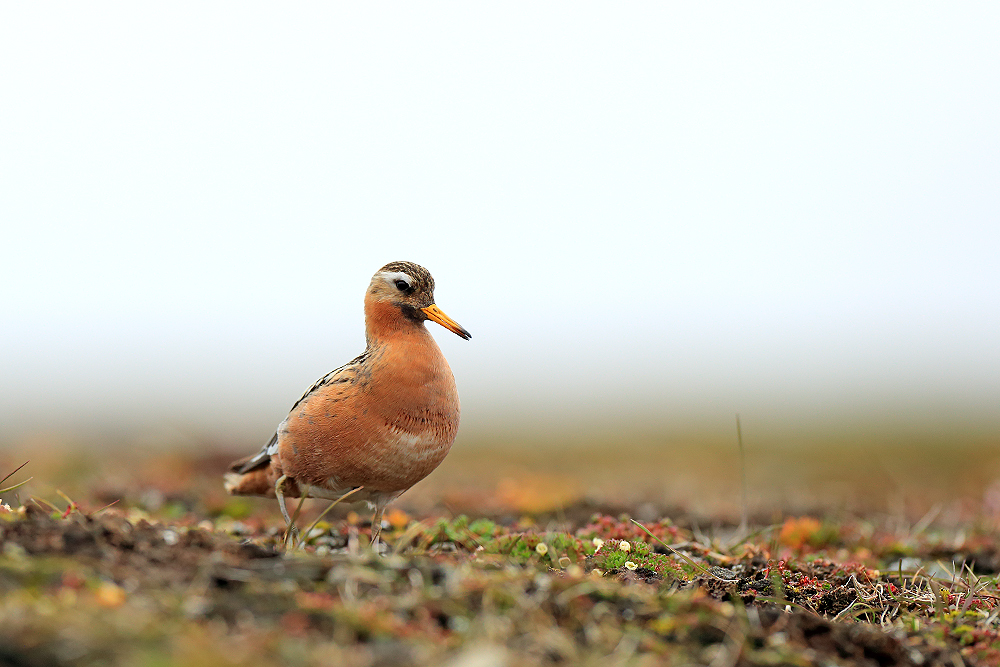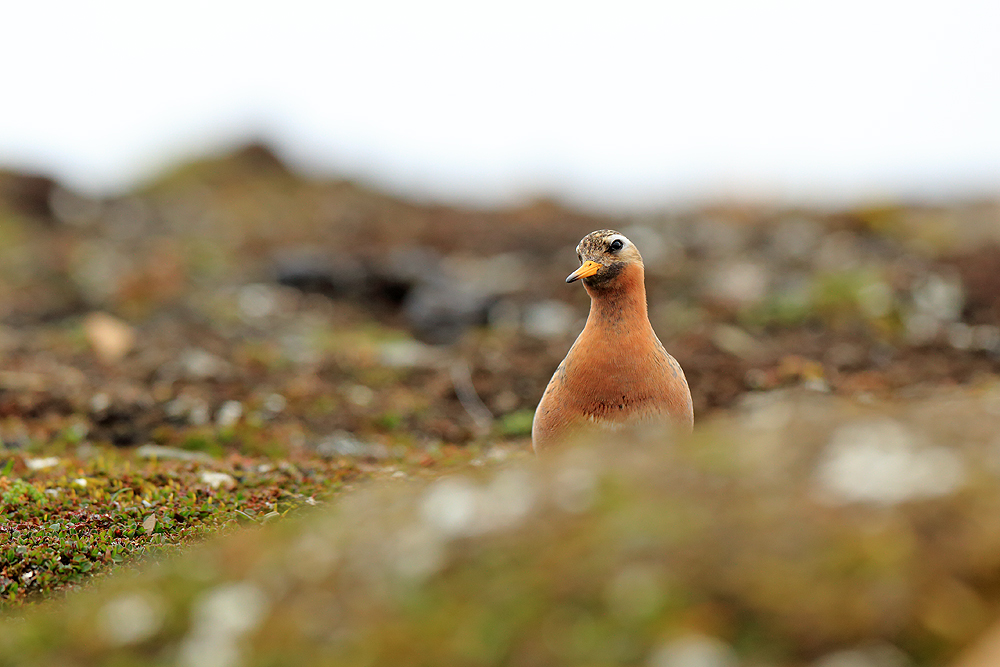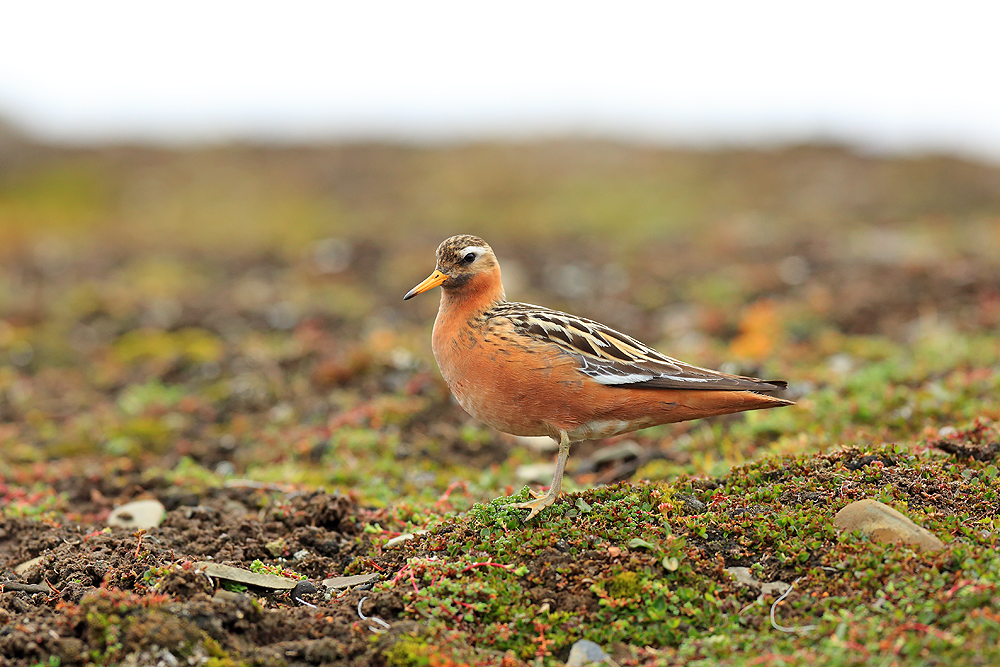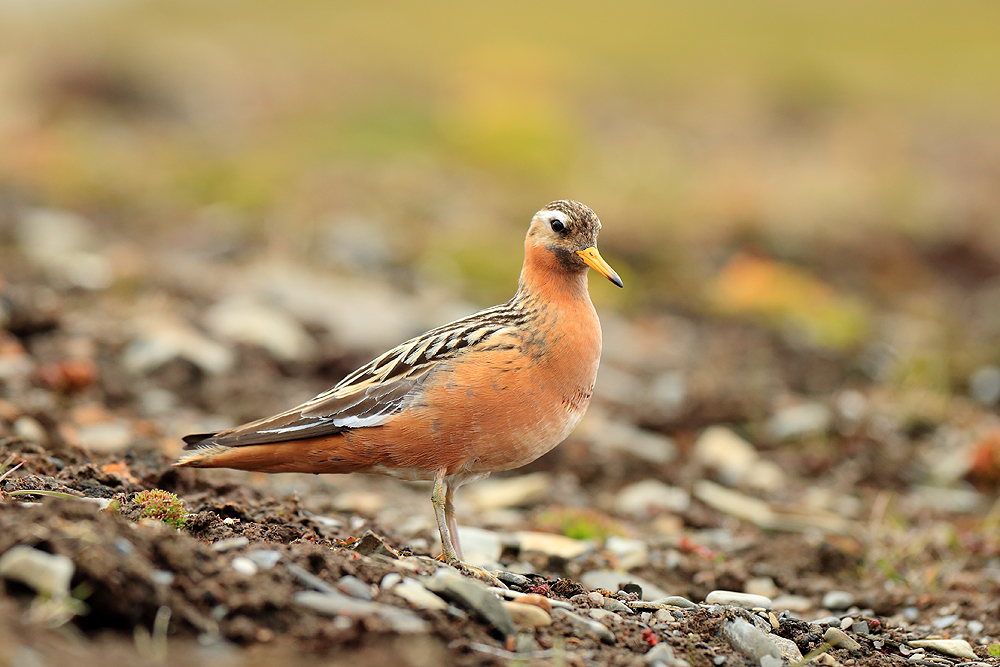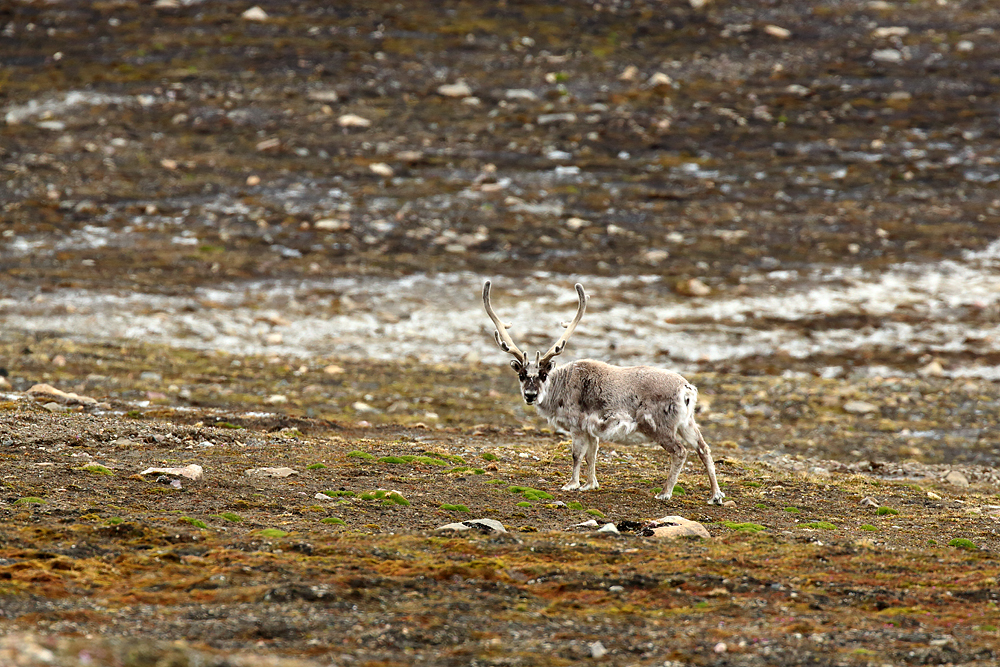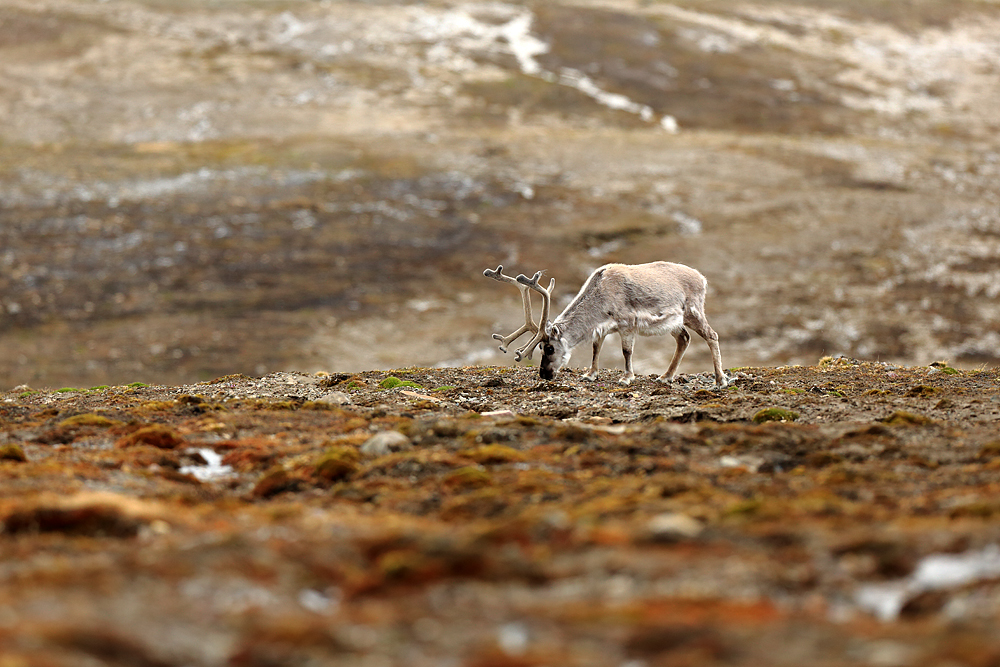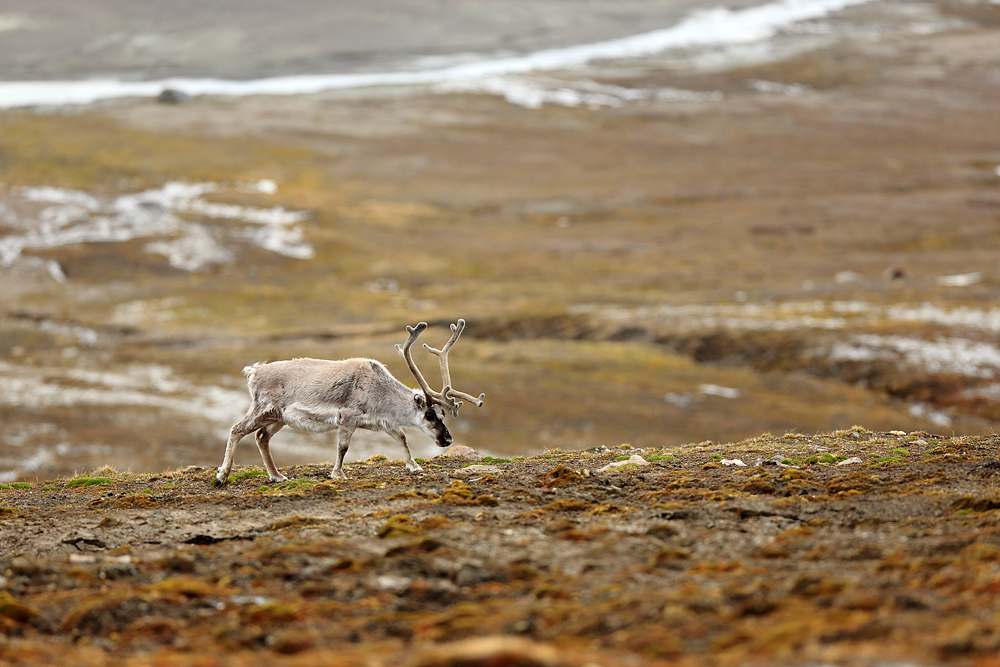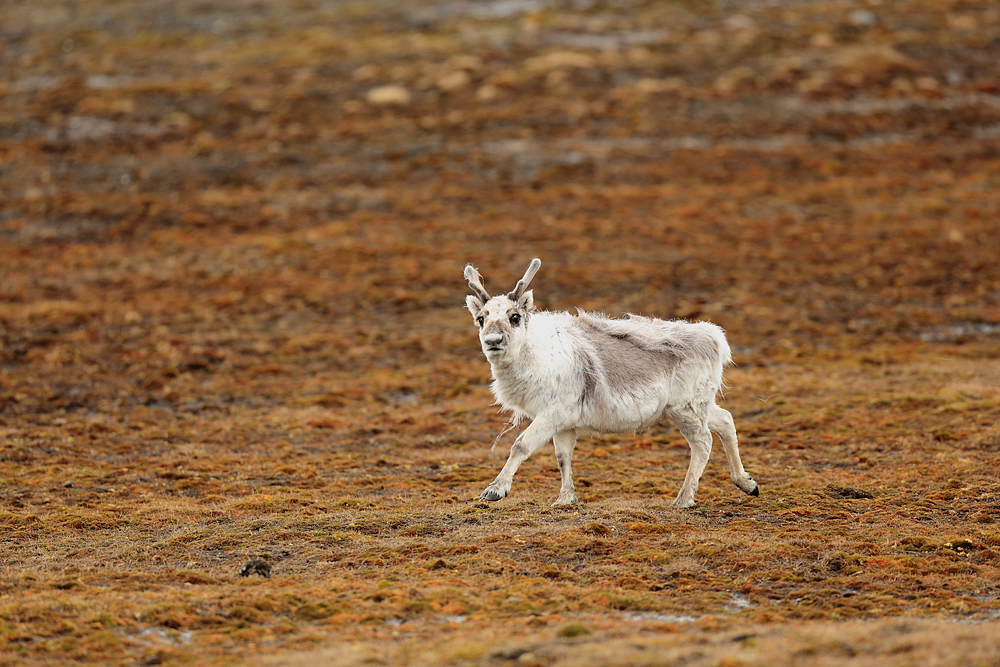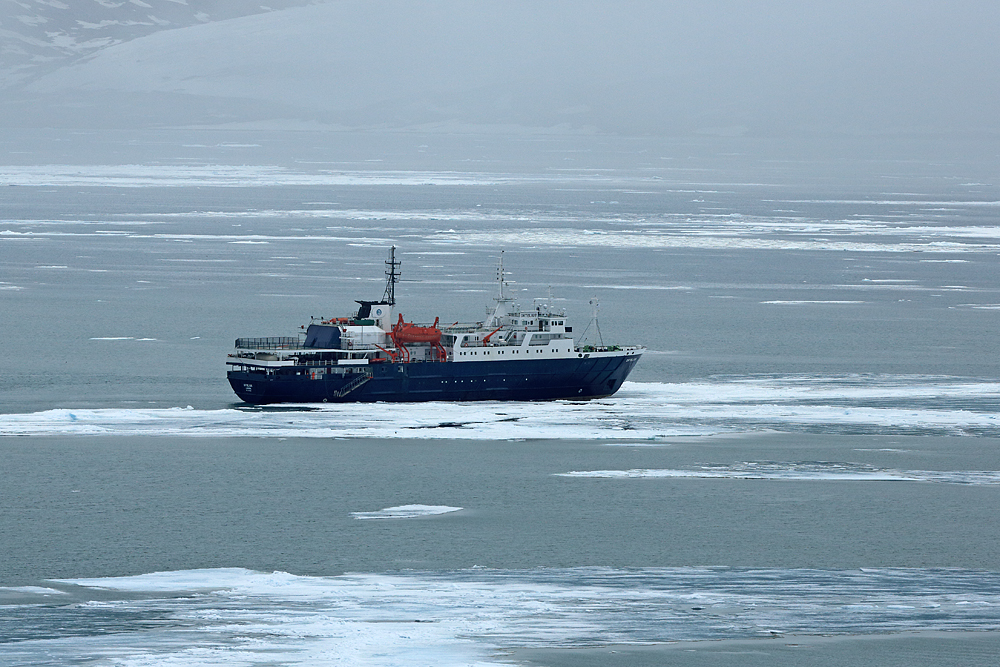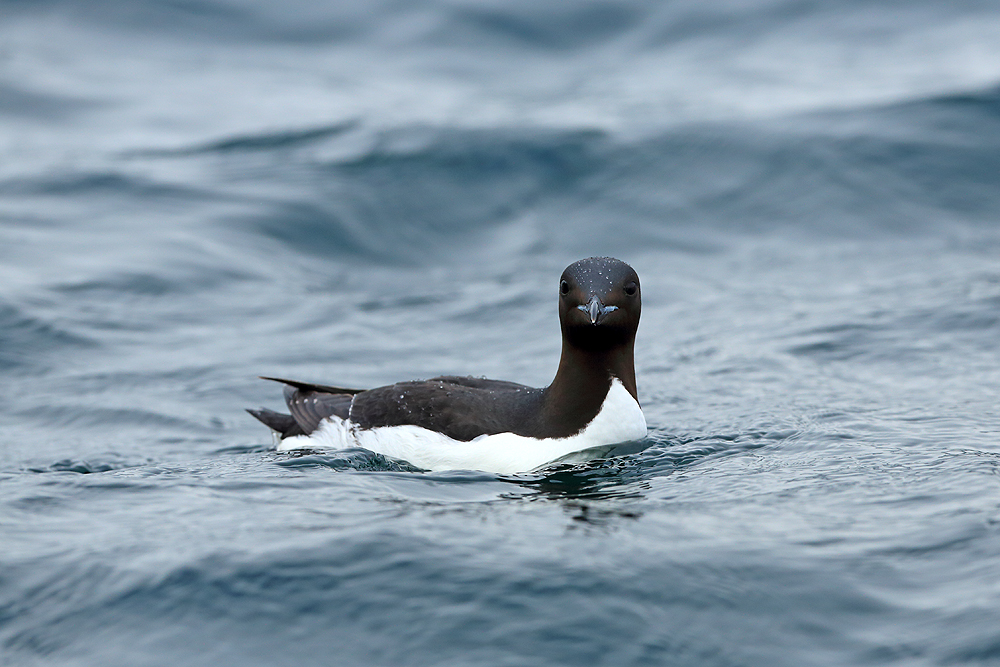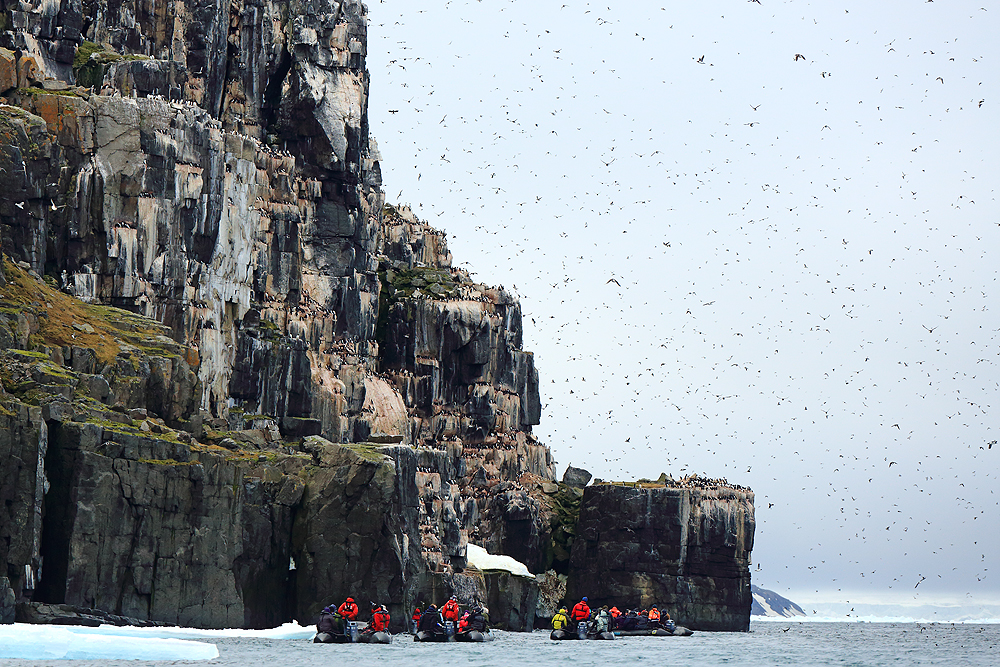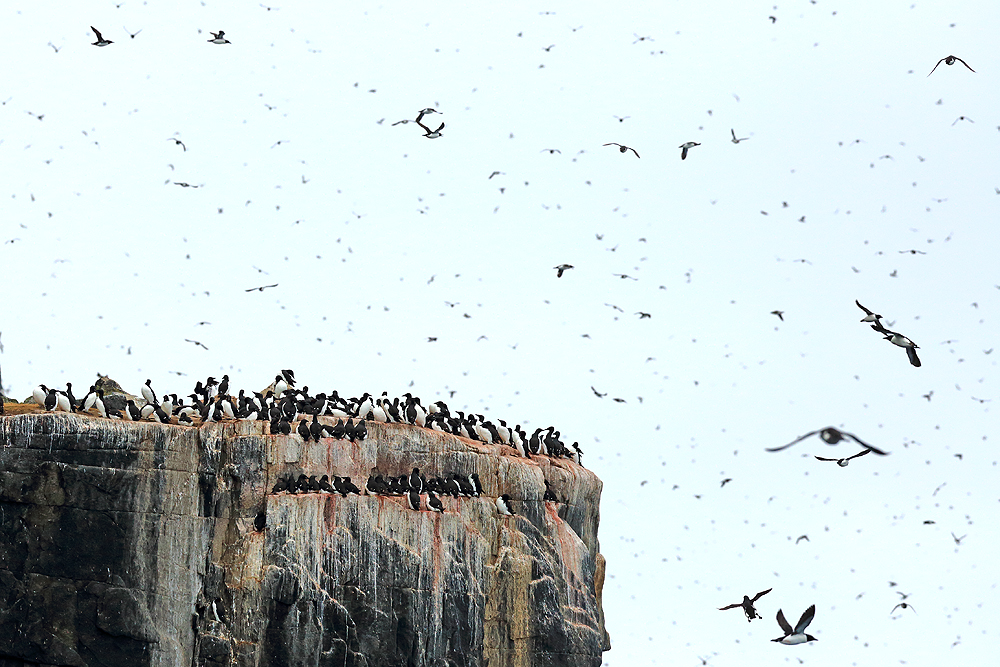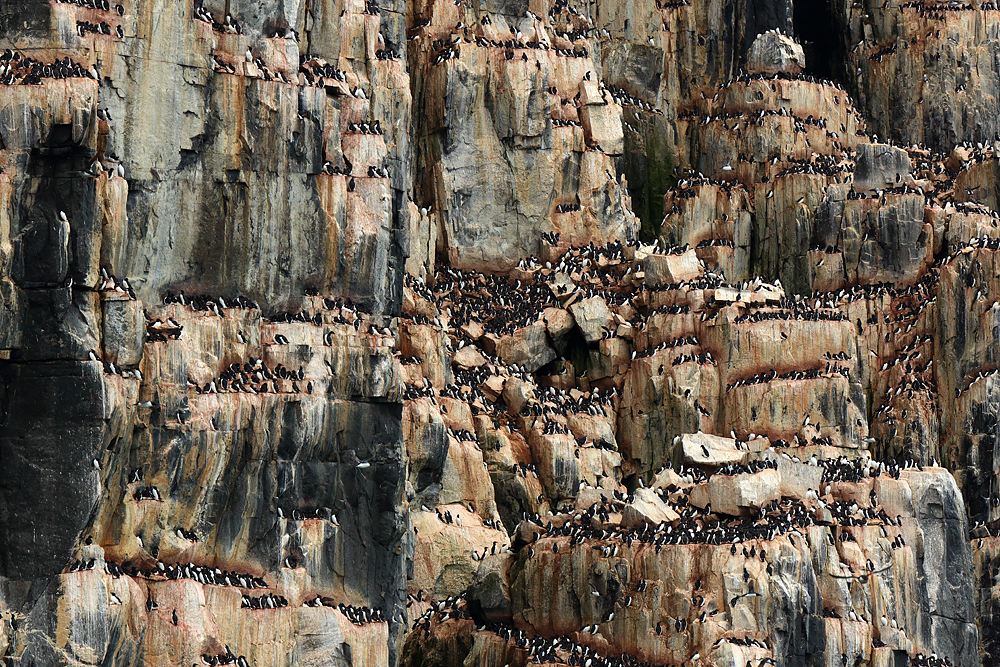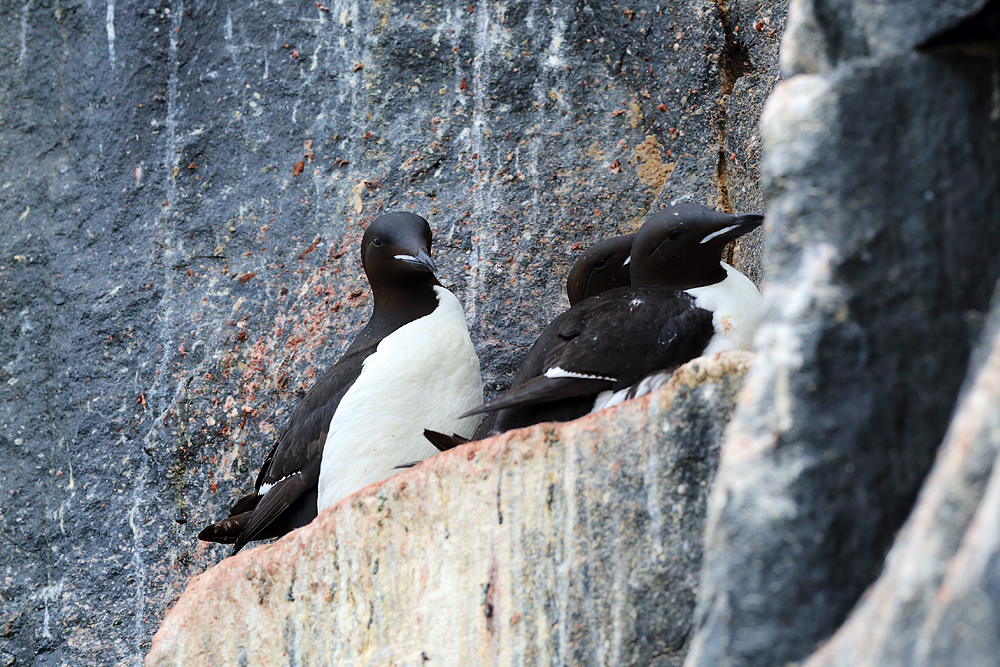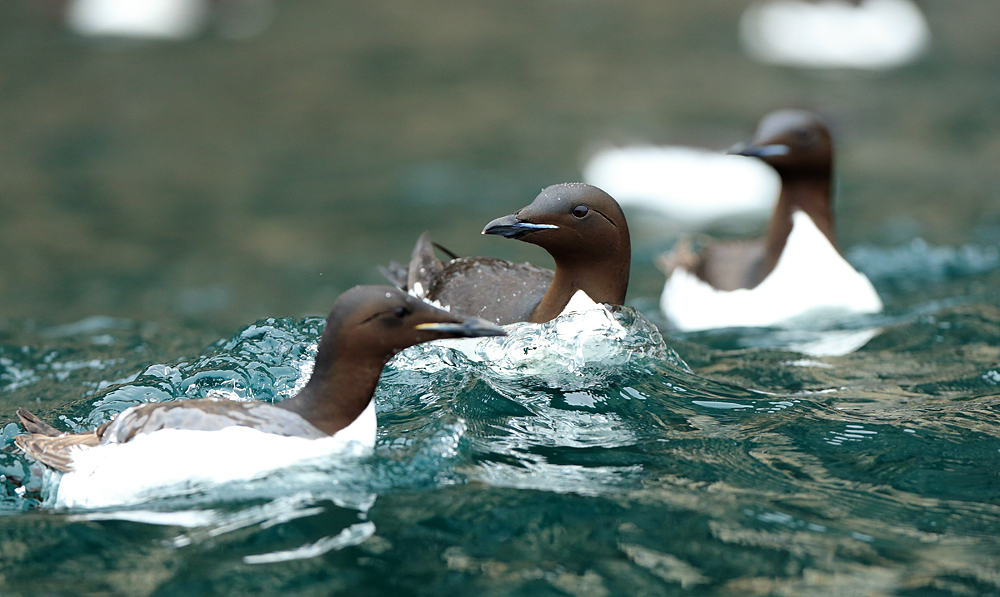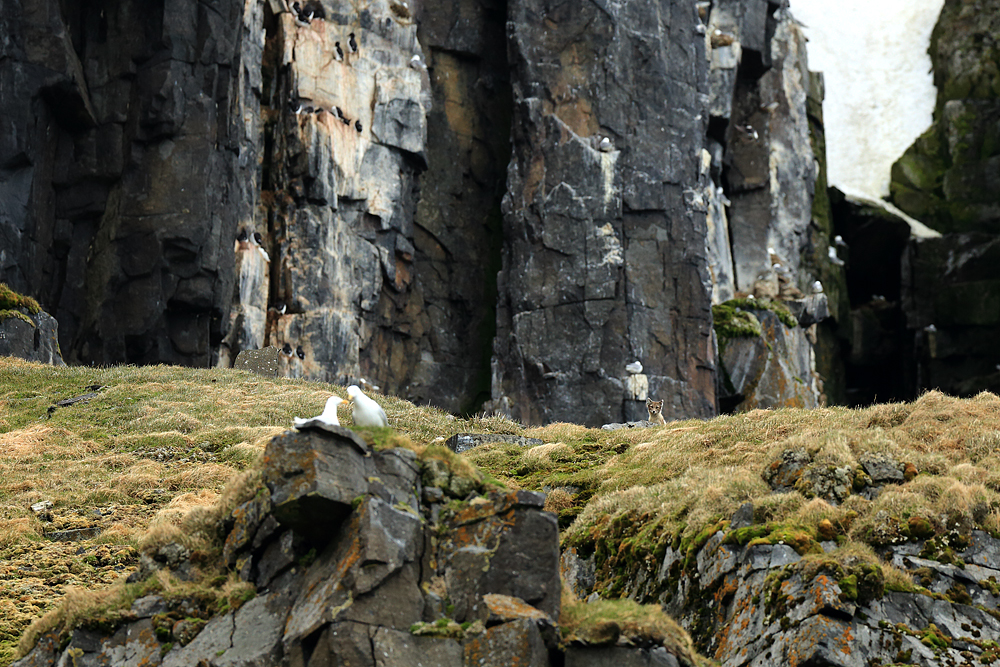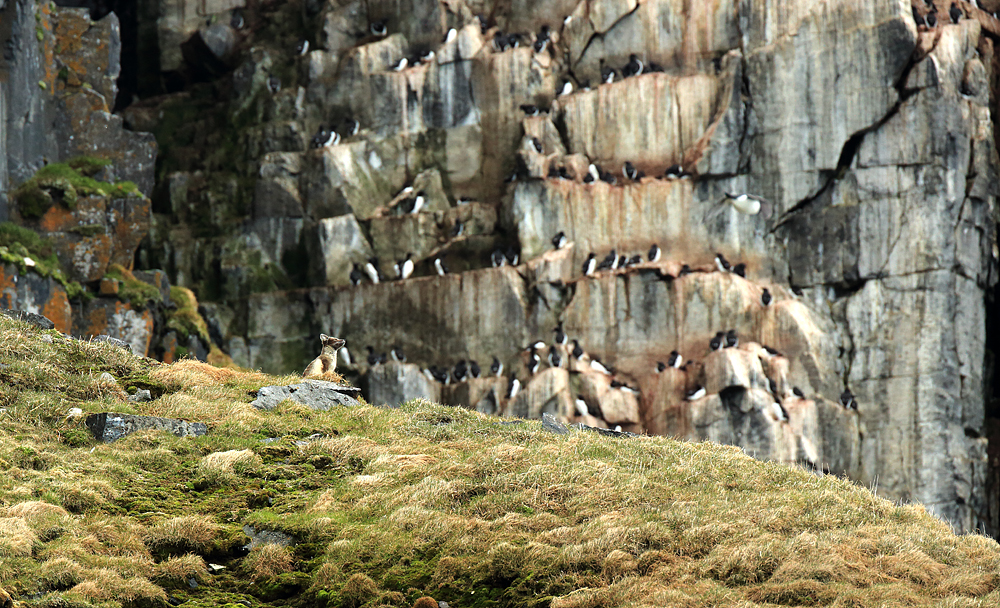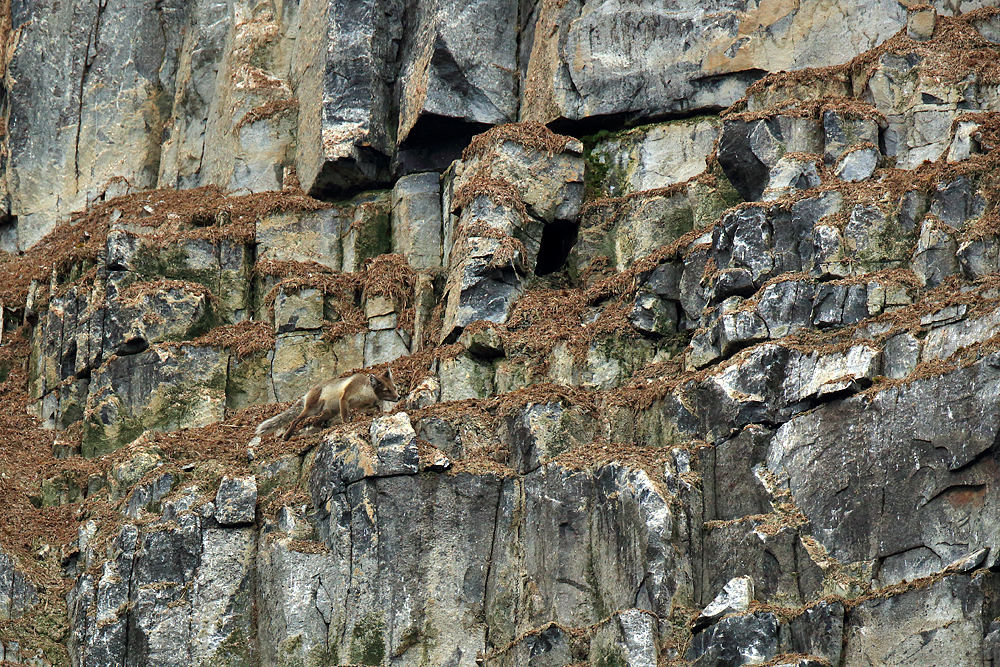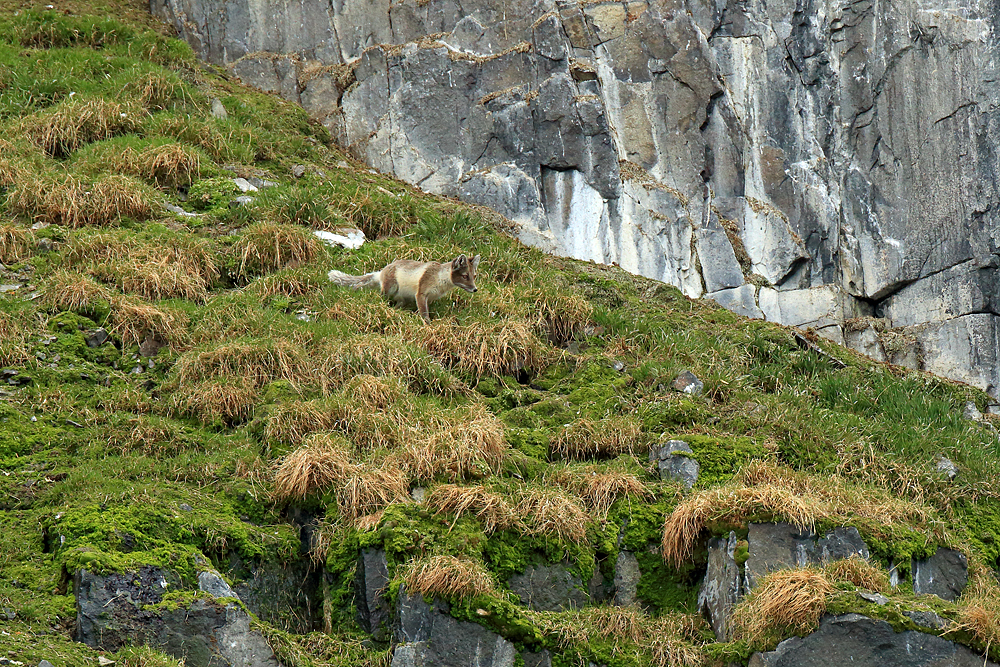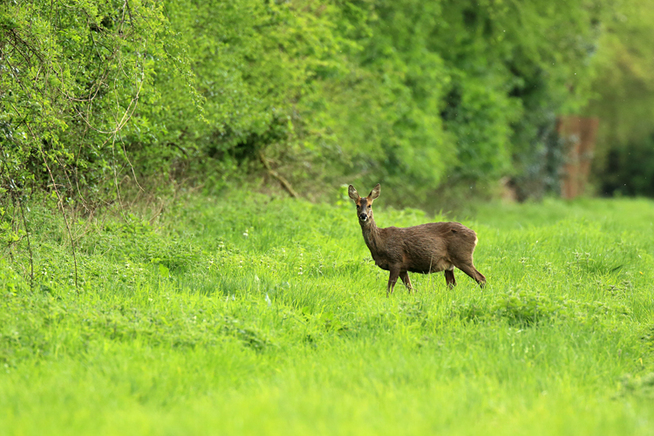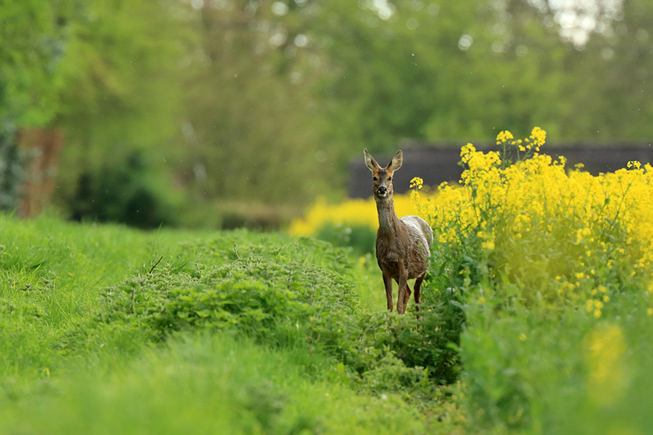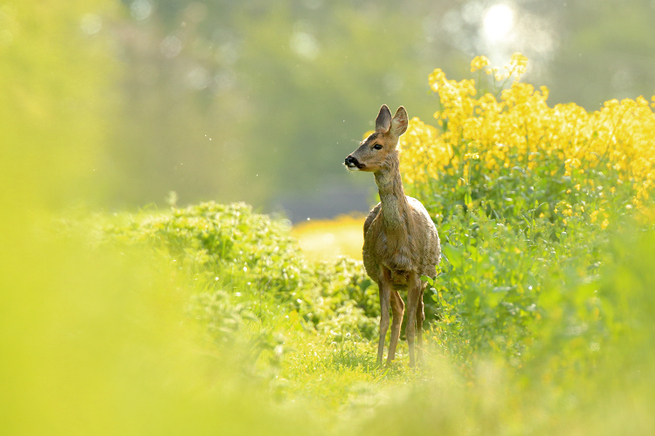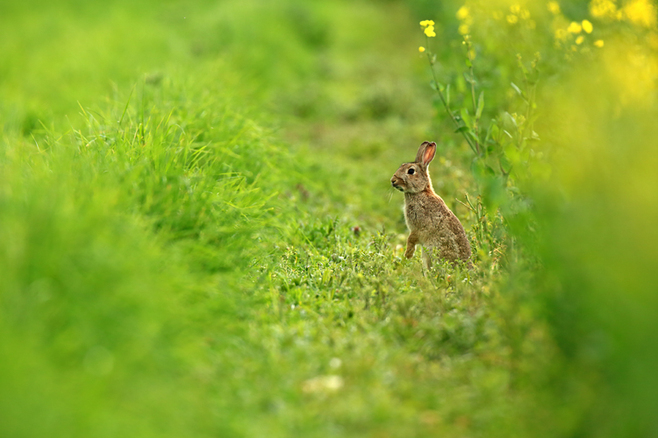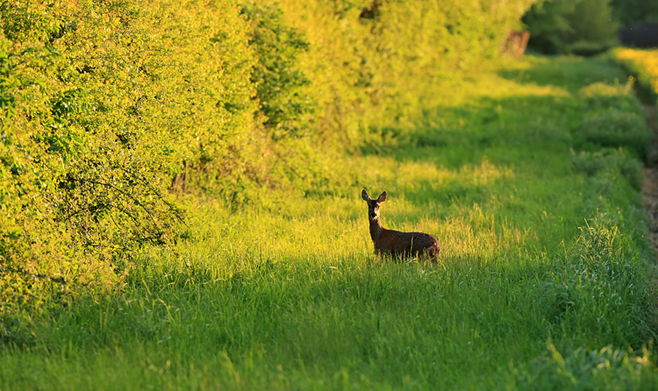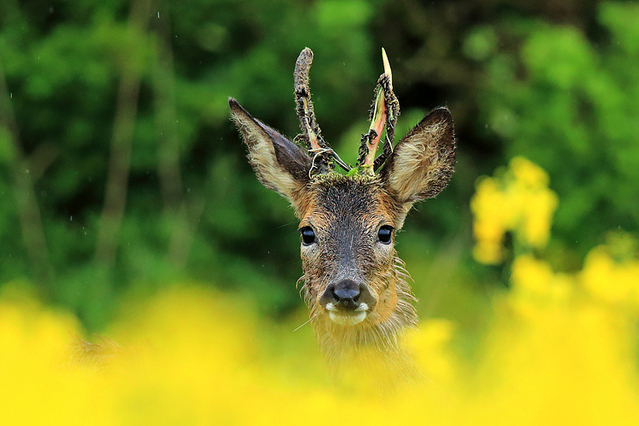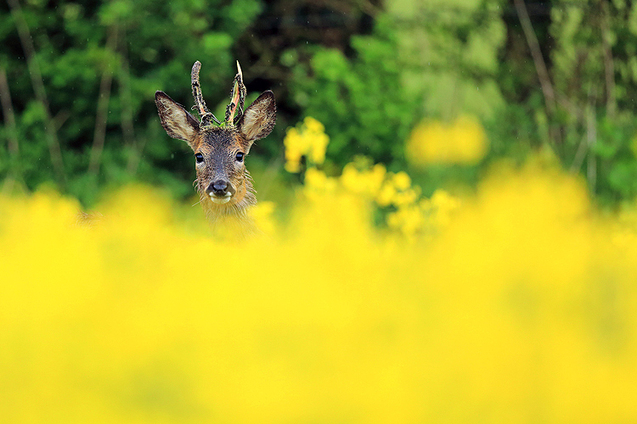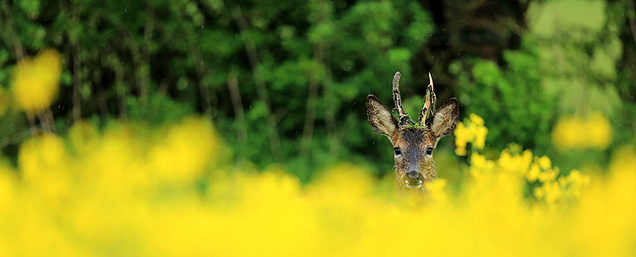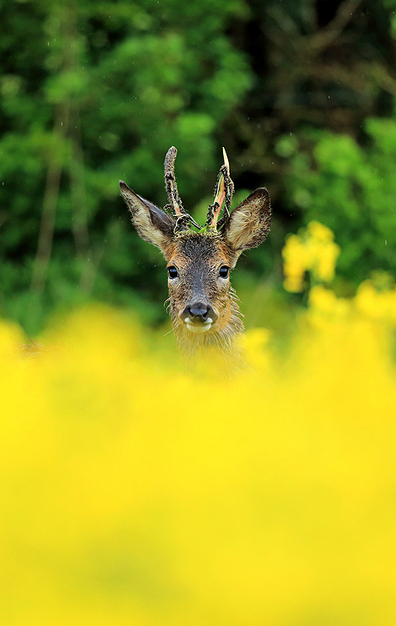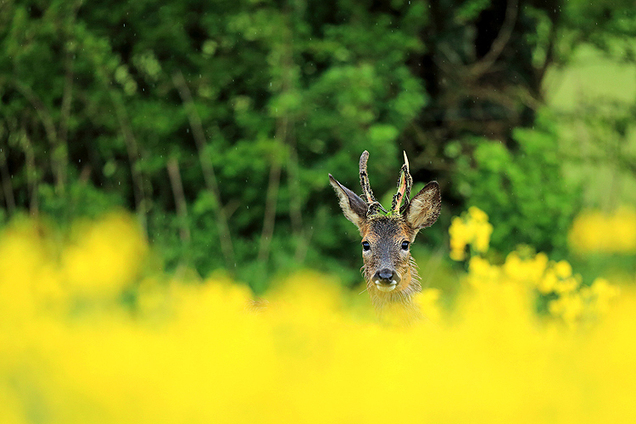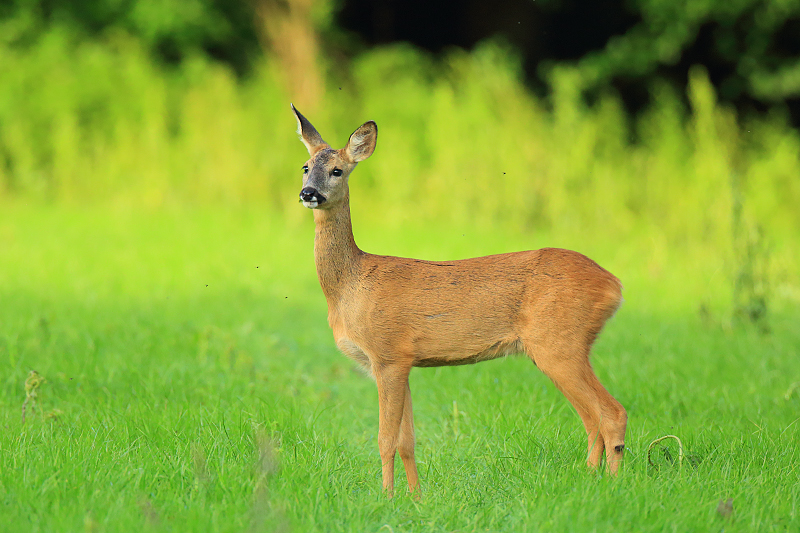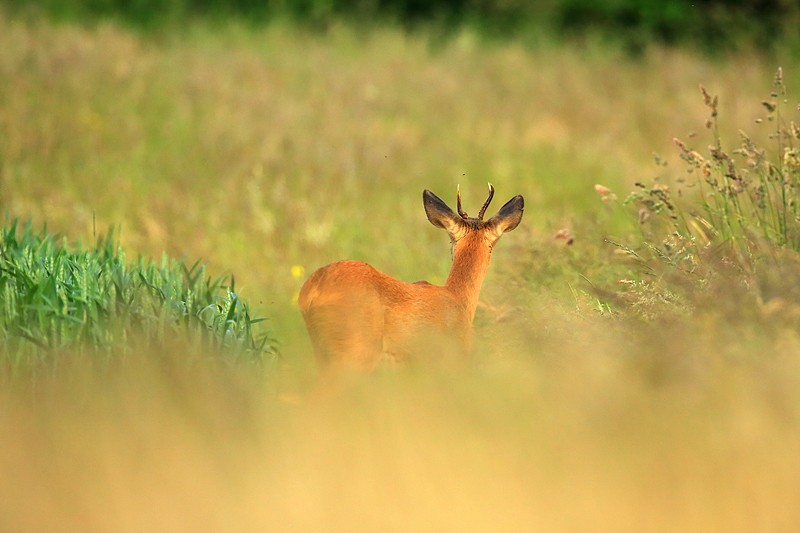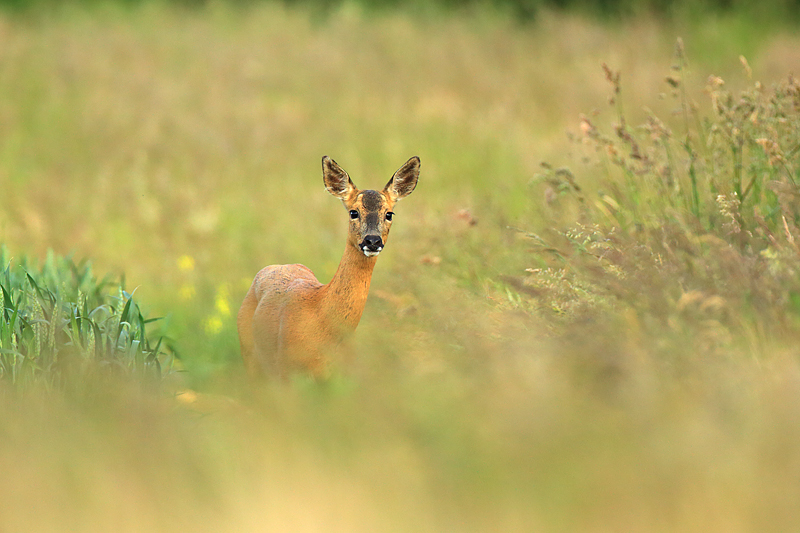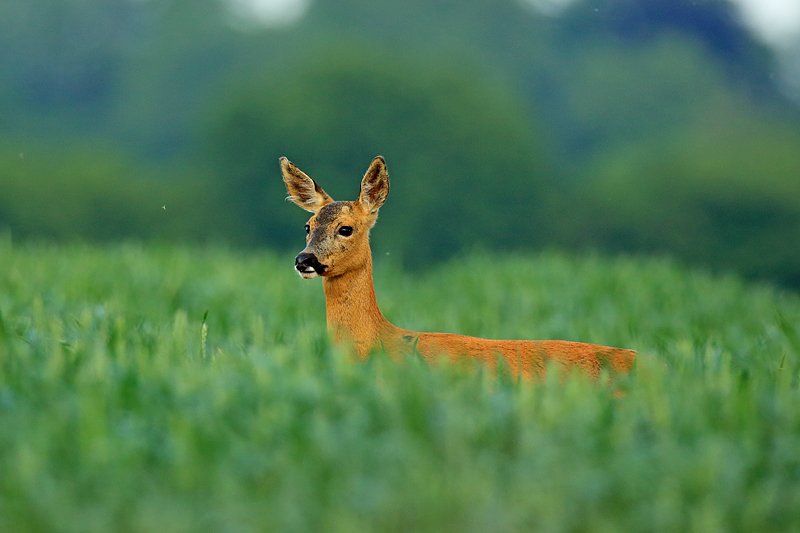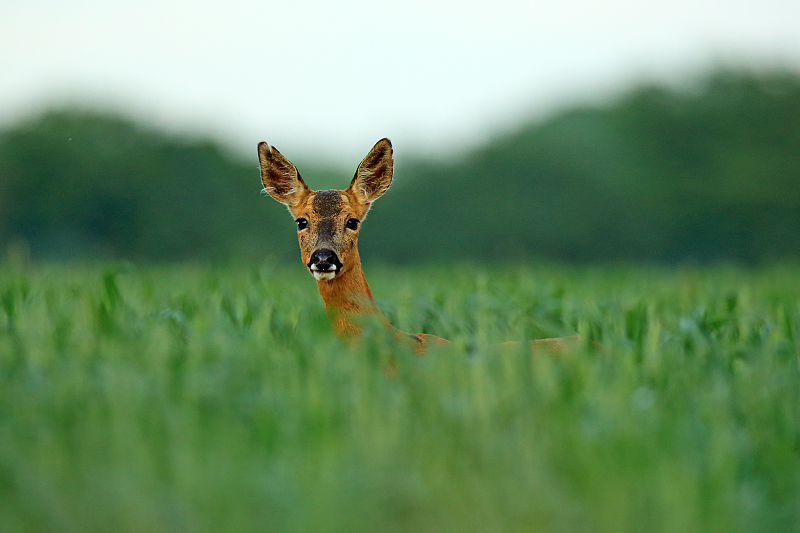|
This year, with travel options limited, I was asked once again by Wildife Worldwide to lead dedicated deer photography workshops in the heart of the New Forest. With permission from Forestry England, I led a number of workshops alongside Ben Sutcliffe. We had some crazy weather, but some great deer encounters with the red deer during the rut. Unlike the deer parks of London, these deer are completely wild and it takes patience to slowly make an approach. The key thing is to ensure that you don't sneak up on them and that they know where you are, while also being aware of the wind direction. Anyway, here are just a few shots from my time in the forest. After some incredible misty action, we were treated to incredible evening action too. It is fabulous to witness this behaviour and enjoy the most remarkable lighting - combine that with a mist and you can't really get it any better. It was an absolute honour to lead a number of workshops and I was delighted for the clients who got some brilliant images.
We hope to run some more workshops in 2022, but it will depend on my availability. Please get in touch if you want to find out more.
0 Comments
With Covid-19 restrictions still in place across the world during the late autumn, there was only one thing to do - explore the ancient landscapes of the New Forest in search of deer. This former royal hunting ground is home to wild herds of red and fallow deer (as well as sika around the Bealieu area) and if you know where to look you can capture some stunning imagery. Deer are notoriously skittish and it is essential to keep your distance and let the deer come to you. If you try and follow deer, you will only spook them. Most of these images were taken when I was on my own, but a couple were taken while leading workshops for Wildlife Worldwide. There are only around 150 red deer in the New Forest and their population is strictly controlled by the national park authority, so it is always worth keeping your eyes peeled for the fallow deer if the reds manage to elude you. If you would like to join me on a dedicated deer photography workshop in 2021, please contact me for more information.
Richmond Park is one of the jewels in the Royal Parks' crown, a wildlife haven in the heart of one of Europe's largest conurbations. Red deer, little owls, badgers and even ring-necked parakeets. I spent numerous weekends journeying up the A3 early to photograph the red deer rut, meeting friends and enjoying the cool autumnal air - the photographic opportunities were excellent. As you can see, the photographic highlights are not only limited to the red deer that call the park home. Above you can see an image of a jackdaw, arguably one of the UK's most beautiful corvids and a ring-necked parakeet (an introduced species from the Indian subcontinent). The deer stags are well known for thrashing their antlers in the bracken, and other undergrowth, when they are pumped full of testosterone. In this case, he took it all a little far and then struggled to see where he was going. This individual stag was not one of the dominant males, and he will probably have to wait another year or two to reach his absolute prime. As you can see from the images above, the red deer often stand proudly as the sun rises over the horizon, seemingly basking in the soft morning light. It was a great few weeks enjoying the wilder side of London and as long as you avoid the crowds, you can expect to see some spectacular behaviour. Next year, if I get to lead my planned tours (if Covid allows), then I won't be able to photograph this annual spectacle.
Well who expected 2020 to be like it has? It has been a year of change, uncertainty and anxiety for many, but the natural world goes on and I have tried to spend as much time as possible out photographing the roe deer once again. I may have not been able to lead my overseas photography tours for Wildlife Worldwide, but I just love being in the field with wildlife and capturing images. I hope you enjoy looking through this year's imagery of my beloved roe deer. This year I struggled to find any males to start with, instead focusing on a number of different females who had hidden their young around the estate I photograph on. As summer intensified and the crops turned to the golden browns, the roe deer rut was in full swing and allowed me the opportunity to photograph roe bucks in their prime. I am looking forward to 2021 to hopefully spend some time with the roe deer once again. They have become a big part of my life and probably what I am best known for within the UK.
As those of you that follow my work regularly will know I spend my summers photographing a number of different species, but one I always return to is the roe deer. This species of deer (native to the UK) are particularly elusive, but are surely the most beautiful of species found here in the UK. I have spent many years perfecting my stalking and am very proud of the images I have been able to capture in the past. This year I really feel that my work with the deer as at another level and I am really pleased with the results. The only downside is that after an incident I have been unable to run any workshops – my sincerest apologies to those that wanted to join me this year. Anyway, I will now just let the images do the talking – I hope you enjoy them … I hope you enjoyed looking through the above, I just wish I hadn't been driven away from the site for a period of time. Hopefully in 2020 I can offer the opportunity to come out with me once again.
As many of you will know, I live on the edge of the South Downs National Park. This is the UK’s newest national park, a range of stunning hills and rolling farmland, and is home to staggering number of roe deer. I have become pretty good at photographing roe deer and luckily for me, I can often see them right behind my own house. In mid-May I noticed a handsome buck as I arrived home from the office and spent around 40 minutes trying to work out my approach. The wind had been swirling and it was nearly impossible to get close enough as there was a real lack of cover. Eventually, I was able to get within 20 yards and the deer ended up approaching me – the perfect scenario. To start with the male deer was actually too close to photograph, his inquisitive nature meant he approached to within only a few yards. I stayed perfectly still, the deer alert to my presence watched me, but never tried to run. It slowly moved away and into the dense crop of oilseed. As you can see, I was blessed with a very cooperative buck, standing beautifully in the yellow flowers of the oilseed crop. It wasn't the longest photography session, as the deer decided to slowly move away into the deepest part of the field, but I managed to capture some beautiful imagery in the short time I was there.
All of the images were taken on my 500mm lens, which is usually perfect for photographing roe deer. Since the start of spring I have been out trying to photograph my local population of Roe Deer. I have heaps of practice with this lovely species but they can still be a tricky subject to photograph. They have truly incredible hearing and a superb sense of smell ... you only have to make the slightest mistake and the opportunity will have passed. Recently I haven't had much luck as my valley has been having a swirling wind pattern. This means I have been unable to keep down wind of the deer and they smell me coming from a long way off. Finally the long, warm evenings have given me the perfect opportunity to get out and about to search for the local buck. I know the field that he likes to rest during the day but the challenge is to get close enough and stay down wind. After a few attempts I finally succeeded and had one of the best, and particularly close, encounters with this magnificent Roe Deer Buck. It was a truly wonderful encounter and what made it all the better, was that the buck wasn't at all startled and when I was done, I was able to slip off and leave him in peace.
I will be turning a couple of these images into high-quality prints which will be available in my online store. Please let me know if you have a favourite. I am always astounded at the lack of knowledge regarding local wildlife, this really hit me during the annual deer rut when I said I was going to the New Forest to photograph Red Deer. People didn't believe me, saying that there aren't any wild Red Deer in the south of the UK except for on Exmoor. Well I was determined to show them that there are in fact Red Deer only a stones throw from Southampton and Bournemouth. I spent a couple of weekends searching for this native deer species and was in luck. As I reached my usual patch for the Fallow Deer, I heard a deer barking, but this was no Fallow Deer buck. This was an altogether deeper sound that resonated through the trees. I headed to the edge of the woodland, where the sound came from, and to my delight there were two large stags strutting their stuff. This was the scene I was presented with (above) and then spent the next two hours stalking the larger of the two stags and his group of females. I had to work hard and a constantly changing wind direction made life particularly difficult. The Red Deer of the New Forest are quite transient but are only found in the South Western side of the forest, sadly their population is controlled to stop interbreeding with the introduced Sika Deer found near Beaulieu. I was extremely lucky to get this close to such large wild mammals in the UK but I would like to stress this series of images took over 3 hours to capture, with long periods of stalking required.
If you see any deer in the New Forest, please don't walk straight towards them, instead make sure the wind is in your favour and keep yourself hidden. It is usually best to let the wildlife come to you, be patient and above all just enjoy what you see. Our planned landing site for this morning was Kapp Waldburg, a site for nesting Kittiwakes in a steep sided canyon. As we arrived at our landing point we heard over the loud speaker that there was a Polar Bear and we would have to head elsewhere to stretch our legs. From there we headed on towards the tundra habitat at Sundneset, once again as we approached the landing site the Polar Bear call went out again. This bear was very relaxed and the expedition team decided it would be safe to land slightly further down the coast and have the ship keep an eye on the bear's where abouts. As we landed we were greeted by a truly wonderful site, a stunning pair of Grey (or Red) Phalaropes were feeding only yards away from us. The male was particularly obliging, carrying on with its feeding as if we didn't even exist, the female on the other hand seemed to be rather skittish and wasn't a particularly good poser. Unusually for the bird world the female Grey Phalarope is actually the more beautiful. The males take care of the eggs and ensure they hatch before raising the chicks, the female visits a multitude of males and lays her eggs with a few of them ensuring that they have the best chance of survival. As we left the two phalarope to their own devices we headed inland across the tundra and had an unexpected but truly wonderful encounter. A very shaggy Arctic Fox was heading towards us and we were blessed with extraordinarily close views. The fox had not yet lost all of its winter coat and spent a bit of time rolling around doing its best to free itself from its Arctic jumper. There were also a few Svalbard Reindeer within the vicinity but they were all a little nervous around us. After spending a couple of hours on shore and aware that there was still a Polar Bear within the vicinity it was time to head back down to the Zodiacs and transfer back to the Ortelius. As we reached the landing site we realised that the male Grey Phalarope was still feeding and happy to pose for the photographers in the group. After another incredible lunch we set sail for Dolerittneset, the ship anchored and we were once again out on the Zodiacs heading for shore. I joined the hiking group and we climbed up into the misty hills that towered above the water. We really didn't see much except for a few reindeer and a couple of ptarmigan and even Stein (our Norwegian guide) seemed to find the climb hard work. I am sure on another day the views could have been superb but on this day the visibility was less then 20 metres.
We eventually headed back down towards the ship and had a look at the multitude of Walrus bones that littered the shoreline. This was once a great Walrus haulout but unfortunately they were nearly hunted to extinction in this area. There were a couple of individuals on the shore but no longer were there the numbers that once thrived here. Once we were back aboard the ship, we headed for the southern most tip of Spitsbergen and up towards the stunning fjord of Hornsund. This took us all night and most of the next morning but what was in store in Hornsund was something none of us ever expected, it was a day that will stay with me until the day I die ... keep reading to find out what Hornsund had in store. Having had two Polar Bear sightings in as many days the morale was high among the group but sadly our planned excursion to find the Walrus haulout was a no go. It seemed that nobody was at home and so we moved on to the fhord at Faksevagen. Here we went off on our first proper walk to explore the Arctic Tundra. We set off with our Norwegian guide Stein and headed up the hillside into the slight mist. Stein was completely relaxed and didn't seem at all worried by the possibility of any bears. We spotted a few Reindeer here and there but they all seemed to keep their distance from us, suddenly we had company ... a Purple Sandpiper. The bird blended in superbly well with the tundra and you can see why they breed in this terrain. Then at long last the Reindeer came close enough for me to get a few shots, including the lovely male below which had a great set of antlers. As we walked along the edge of a shallow ridge line we suddenly saw a white animal appear within only a few yards of us. Your reaction says Polar Bear but luckily it was only another Reindeer, and luckily for me he posed nicely for a few photographs too. At the top of the ridge we had a sighting of the ship surrounded by an ice floe that had been at least half a kilometre away when we landed. It just goes to show how quickly the environment can change in this amazing landscape. We headed back to the ship for yet another filling lunch before we headed to the amazing breeding colony of Brunnich's Guillemots at Alkefjellet. We were told to dress warmly as we were going to be on the Zodiacs for at least a couple of hours and possibly more depending on the quality of the sightings. We went out onto the water in our Zodiacs and I had our Austrian guide Barbara (an expert on Glaciers). We made our way slowly towards the cliffs and at first there were just a few hundred birds on the tiny rocky outcrops, where each bird was incubating a solitary egg. However, as we made our way further along the cliffs, away from the ship the sky seemed to be filled with birds. The cliffs were towering above us, stained a mix of white and pink from the guillemots' droppings, and the birds were there in their thousands. The noise was quite amazing and it was an incredible spectacle which I feel truly honoured to have seen. We were desperate to see our first Arctic Fox at Alkefjellet and when we came to a grass covered scree slopes it was the best chance we would have. We scanned and we scanned but we just couldn't see any movement ... then Barbara spotted one, our first Arctic Fox. She was so excited and we were too, it was a long way off but it was an amazing sighting. We eventually decided to leave the fox alone and head back to the ship for the evening and yet another meal. Tonight we were heading to a fjord that has only be visited by a handful of vessels, even our expedition leader had never been there before. We were now really on a true Arctic expedition and heading into the unknown.
The female Roe Deer that has been around over the last few weeks was definitely pregnant ... and you can see the images below as to how I know. It seems she is much more alert now then she was and I am wary about getting too close and spooking her. I would love to carry on photographing her and her fawn(s) over the summer, let's hope she sticks around allows me to her share her summer life. I have also had a few rabbits around as I always do but they are never easy to photograph being particularly skittish. So you can see that she had quite an impressive belly and that has certainly disappeared now. She looks sleek and actually much more healthy, she has shed her winter coat and now looks fine in her shorter summer coat. The Rabbits are always close by and if you sit still for long enough, you are usually within twenty yards or so of a cute individual. I will keep trying to photograph the Roe Deer for the next few months but for the moment she is proving to be rather elusive.
For the last few weeks there has been a lot of deer activity around my house and in particular the field behind my house has been a hub of activity. In fact, I have been trying to photograph the deer for a few weeks but haven't had much luck. This unlucky streak really proved itself when one afternoon I crept up on a group of three different Roe Deer and I was all set up to get some great images. I had been laying in wait for around an hour, the deer were resting on the ground and I was anticipating that they would kick into activity as dusk approached. However it really wasn't to be as suddenly the three deer came leaping by me and I knew that was that! To my surprise I turned to see two men standing, around ten yards away, and when they spotted me they screamed for me to put up my hands. They were two armed response officers pointing their pistols at me as someone had called 999 reporting an armed man in the middle of a field. After discussing with Hampshire's finest Police Officers that I was merely photographing some deer, they let me return the 100 yards home. Anyway after a bit of persistence and some very good sneaking around the same field I have finally managed to get some shots which I am pretty happy with. I got absolutely soaked and it really wasn't a warm day but it was worth every moment. I was only around 10 yards away from this Roe buck and he was completely at ease with me, in fact as I type this he is still feeding behind my house. Enjoy the pictures! So after a busy evening already photographing the Fox cubs, the Roe Deer that turned up at the Fox den decided to hang around for a wee while and I photographed it for a few minutes before it moved off. I decided to head up the hill towards the local footpath and then back home. When I got to the top of the hill I noticed a young Roe Buck as well as a Doe. The wind was in my favour and I was able to get incredibly close, which of course meant I managed to get some images.
I spent around 10 minutes getting closer and closer until the wind changed and the Doe got spooked, moments later the Buck moved off too. So a really productive evening again, Ropley is really providing the goods right now. |
AuthorBret Charman Archives
July 2024
Categories
All
|

